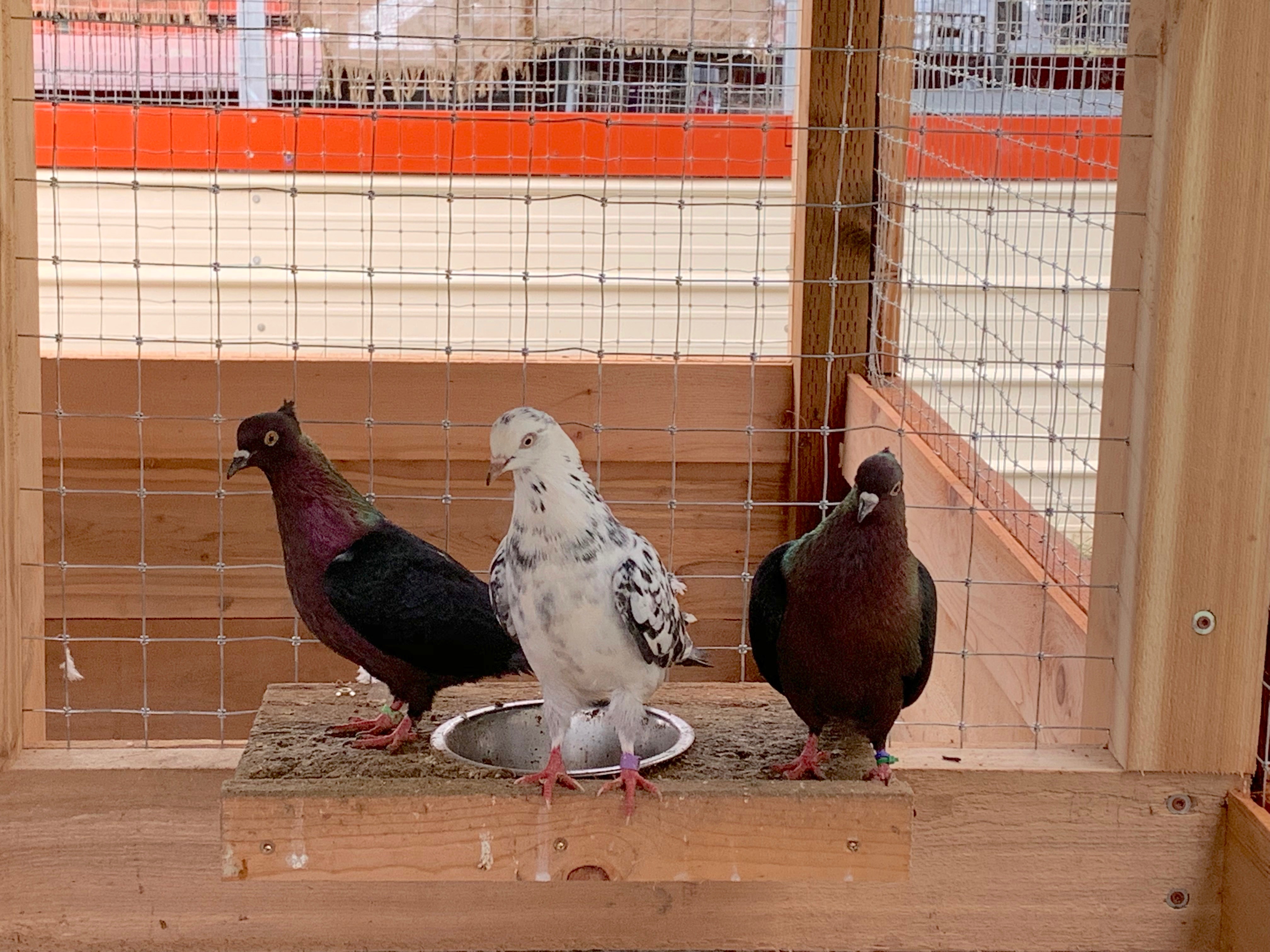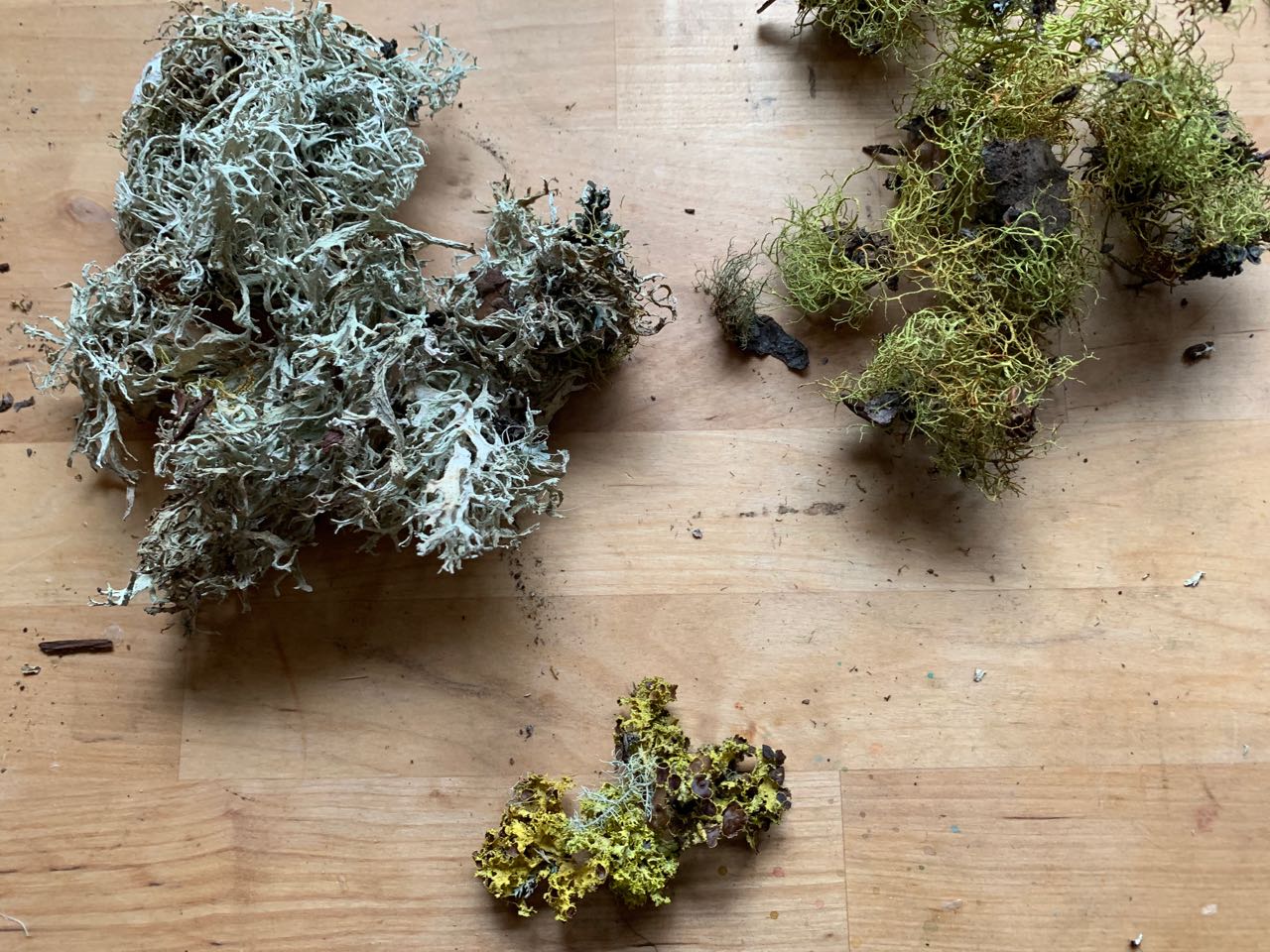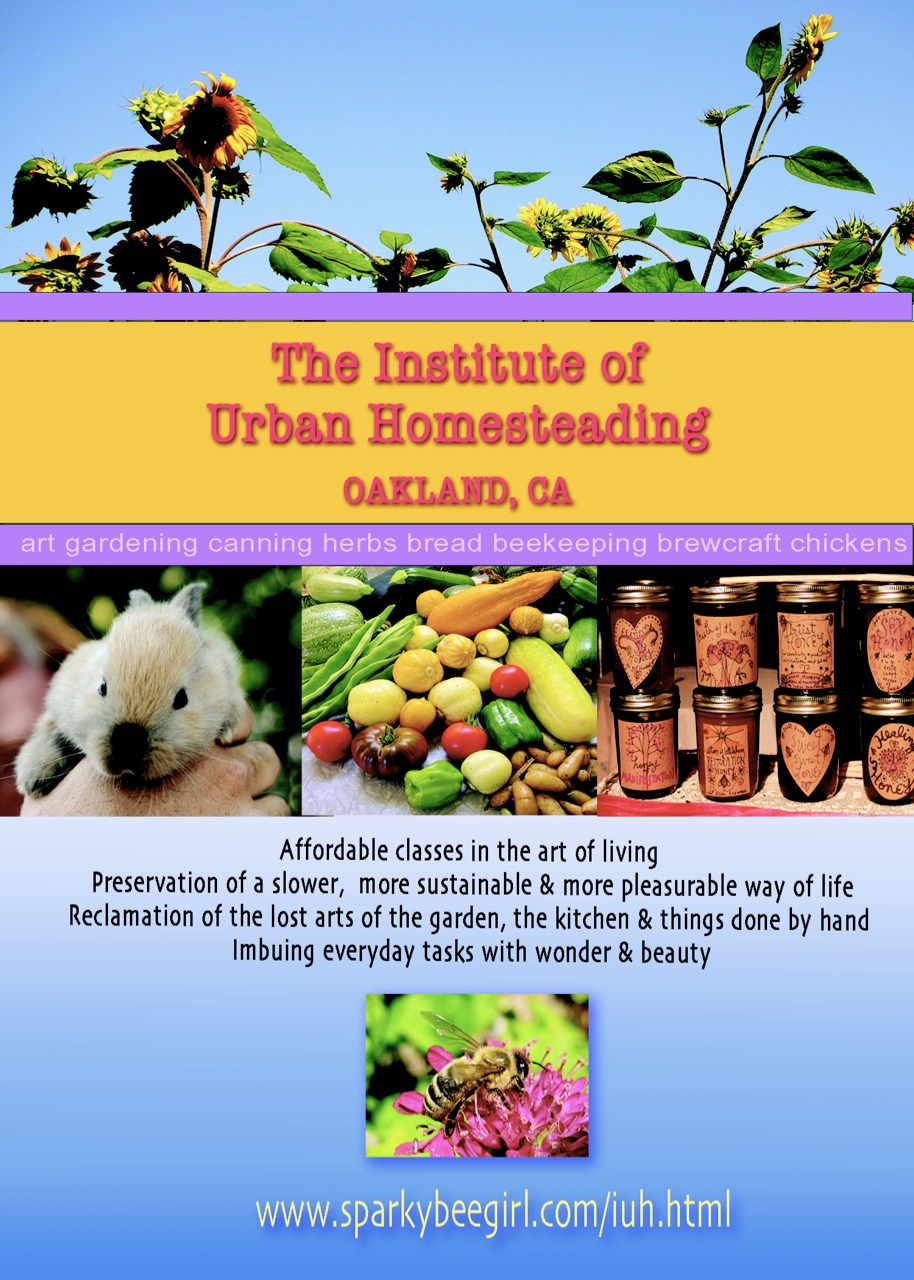2019
DECEMBER
Happy December Everyone!
Yay For Rain! Up here in the North we’ve had a few inches of snow, a lovely Thanksgiving and lots of cozy fires…I am super stoked about the upcoming Winter Open House at a fantastic location and with so many wonderful goodies to share.
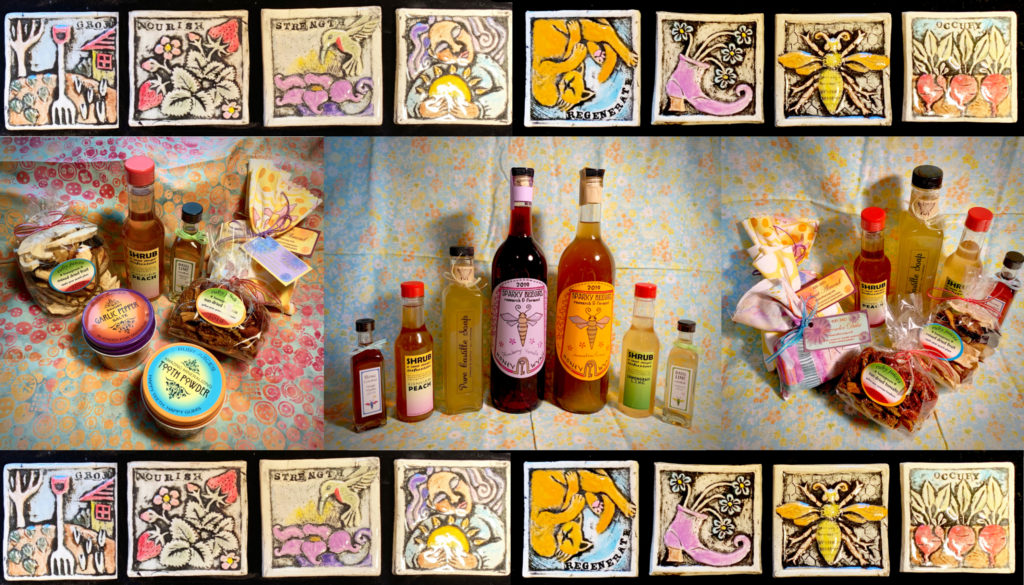 Winter Open House ~ It’s a Party!
Winter Open House ~ It’s a Party!
Holiday Social, Tasting & Sale
Saturday December 14 & Sunday December 15 12noon-4pm each day
138 The Uplands, Berkeley
Please join me for a year end celebration of the bounty! There will be tons of things to smell and taste, shopping, like-minded people and two mini-talks each day. Tasting will include honey, jam, homemade mustard, hotsauce & salsa, pickles, shrubs, cordials, dried fruits, real caramels, infused apple cider vinegar made from my apple orchard—and yes, this year I again have MEAD! All this available for purchase as well as handmade art tiles, handspun yarn, liquid, bar and handsoap, herb & garlic salts, tinctures, salve, CBD on the cheap and much much more. Everything is small-batch, handcrafted, way below market prices and only available from me, here, once a year. Come grab your Secret Santas, stocking stuffers and private stash!
As always my round up, round down policy applies (round up if you find my prices too reasonable and can afford more, ask for a break if your total was a little high). I have had to raise my prices a dollar or two due to cost of packaging and energy costs, but I will roll back to 2018 prices on Sunday— so come Saturday for the best selection (things do sell out!) and Sunday for the best prices.
MINI-TALKS
5-10 minute talks on subjects I am passionate about.
Saturday: 1pm On Moving to the Country ~ 3pm Soil Health & Science
Sunday: 1pm Bees ~ 3pm Food Preservation Q &A (Canning, Fermentation, Dehydration, Freezing)
VOLUNTEERS: I still need one volunteer for Saturday 1:45-4pm and one for Sunday 11:45-2pm. And I could use another person for an hour or less on Friday 9:30am. Volunteers receive a goodie bag in thanks for their help.
About the location: 138 The Uplands, home to IUH supporter Leann Ravenel and family, is a spectacular 1912 craftsman with real East Bay charm. This gorgeous home has tons of original craftsman woodwork and is rumored to have housed a buddhist temple in the past.
Getting there: The Uplands is off Claremont Avenue in the Claremont district East of Elmwood/Rockridge. Once you turn onto The Uplands go about 1 mile, the house is on the right. Walkable/Bikeable from Rockridge BART and on the 79 busline. Please note there is a flight of stairs up to the house, so is not wheelchair accessible, though I am sure we can get help to carry a wheelchair up if needed.
Please feel free to bring friends and share the event widely: https://www.facebook.com/events/2470198919919682/
Kid Friendly, but please leave your dogs at home/in the car.
Year in Review & Looking to The Future
The institute has been hobbling along a little bit here. Now 3 years away from the Bay Area and a bit out of touch with the scene there it has been harder for me to maintain a full class schedule. In 2019 we offered 20 classes from only 2 teachers and we put on a day of Urban Farm Tours. I would love to engage a new crew of teachers and specifically looking for people to host classes on butchery, dehydration & mushroom growing. If you know of fabulous teachers, or if you are a fabulous teacher, please inquire about teaching in 2020 by the middle of January. And if you have desires of what to learn, please let me know as well!
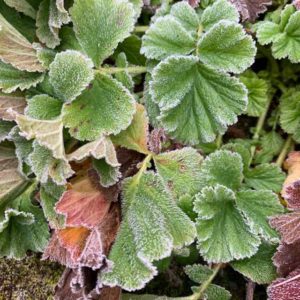
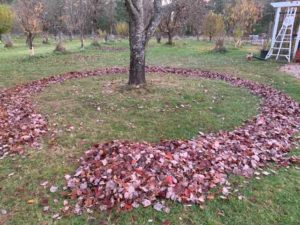
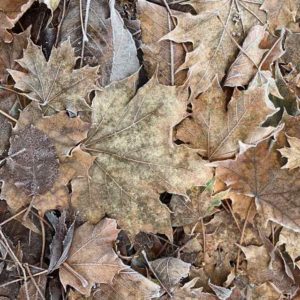 News From he North
News From he North
Winter is here. After a cold dry Autumn, we got several inches of snow last week. The garden is put to rest, the chickens have stopped laying and the lambs have all gone to auction or freezers. We spent hours raking leaves in November, continuing to build our big compost piles. Now I am busy bottling and labeling the years bounty for the upcoming open house and looking forward to time for deep cleaning, purging and new building projects once all this holiday activity is over. We recently acquired a new member and have been working on her house on dry days (see pictures). This little fluffy bear will be a fierce yard dog one day.
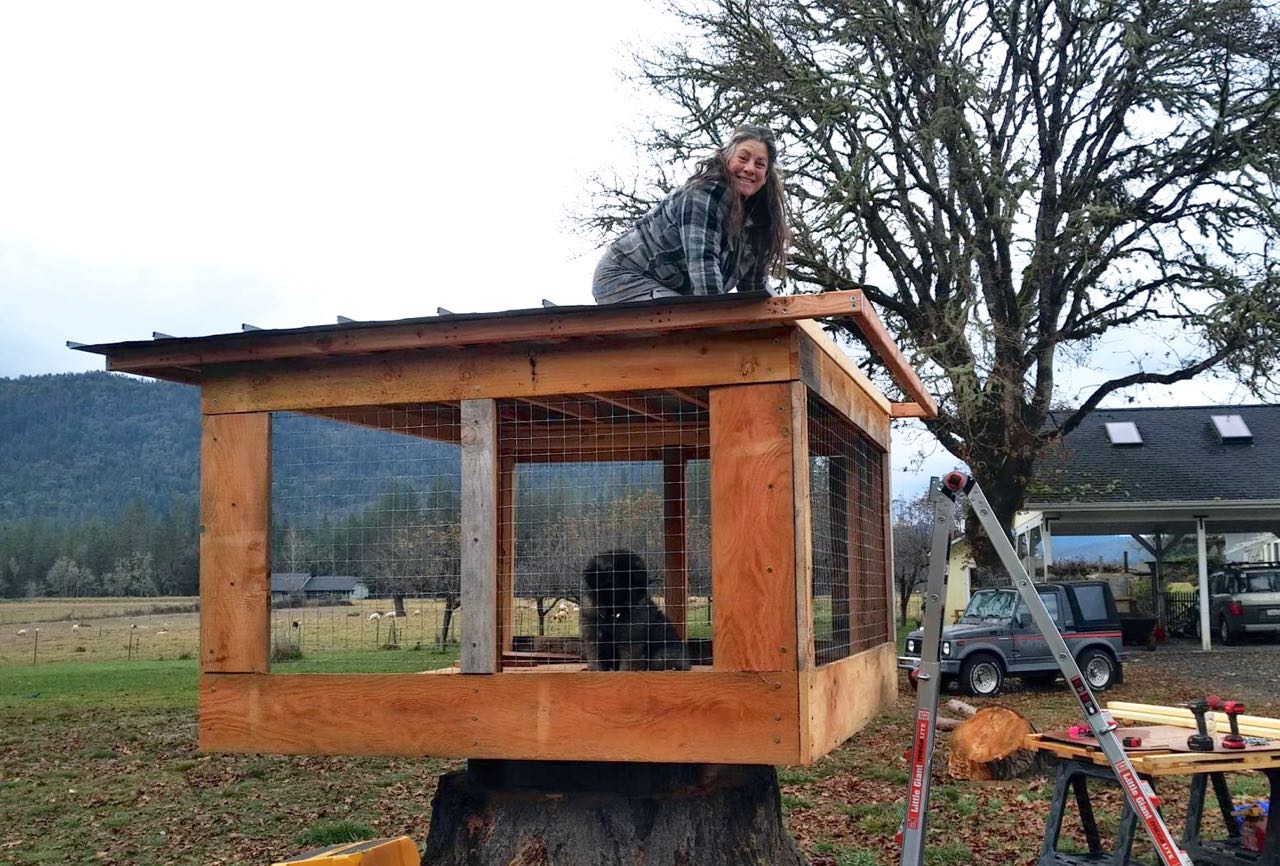

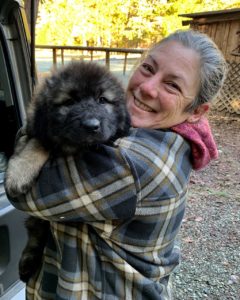
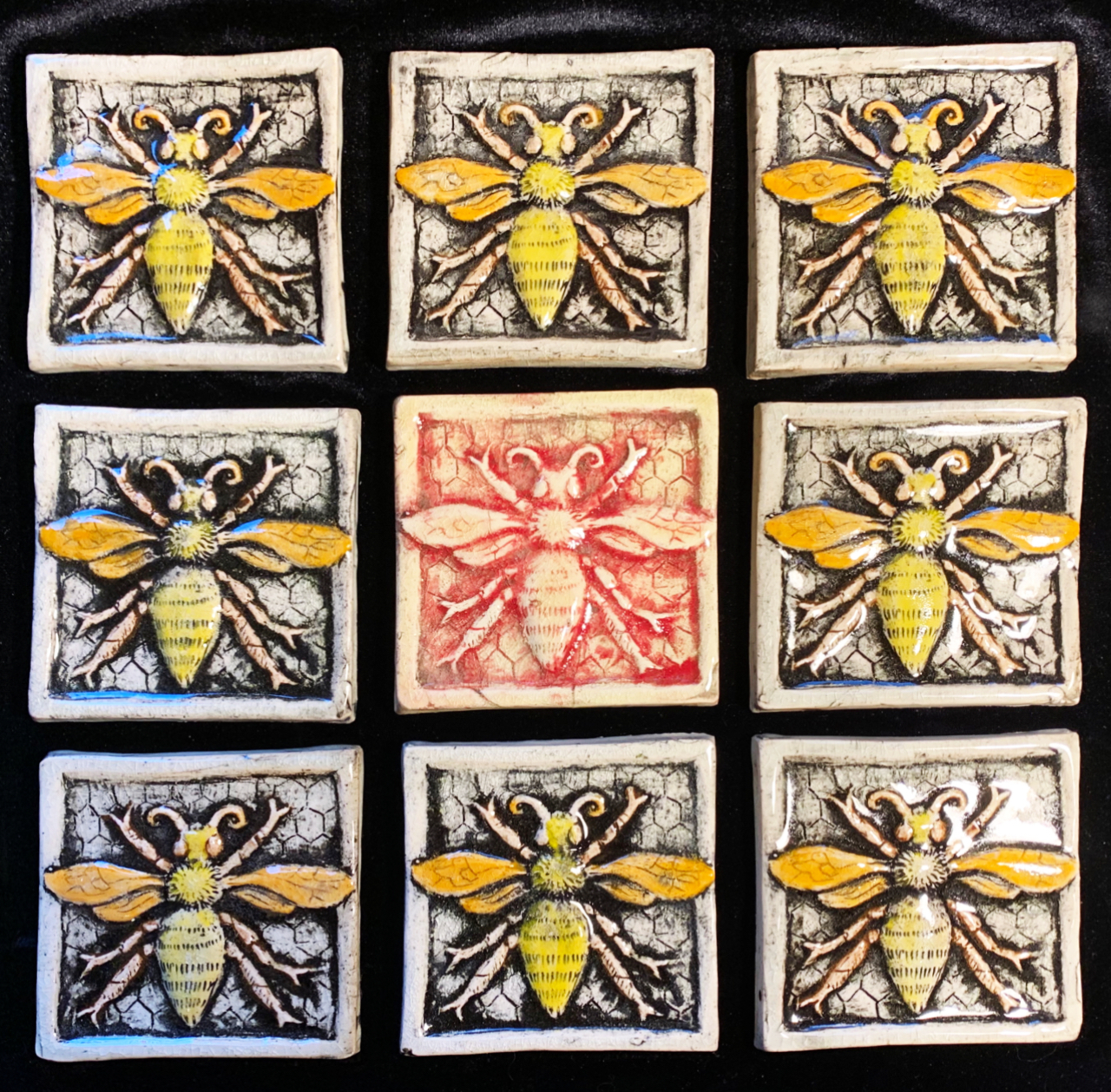
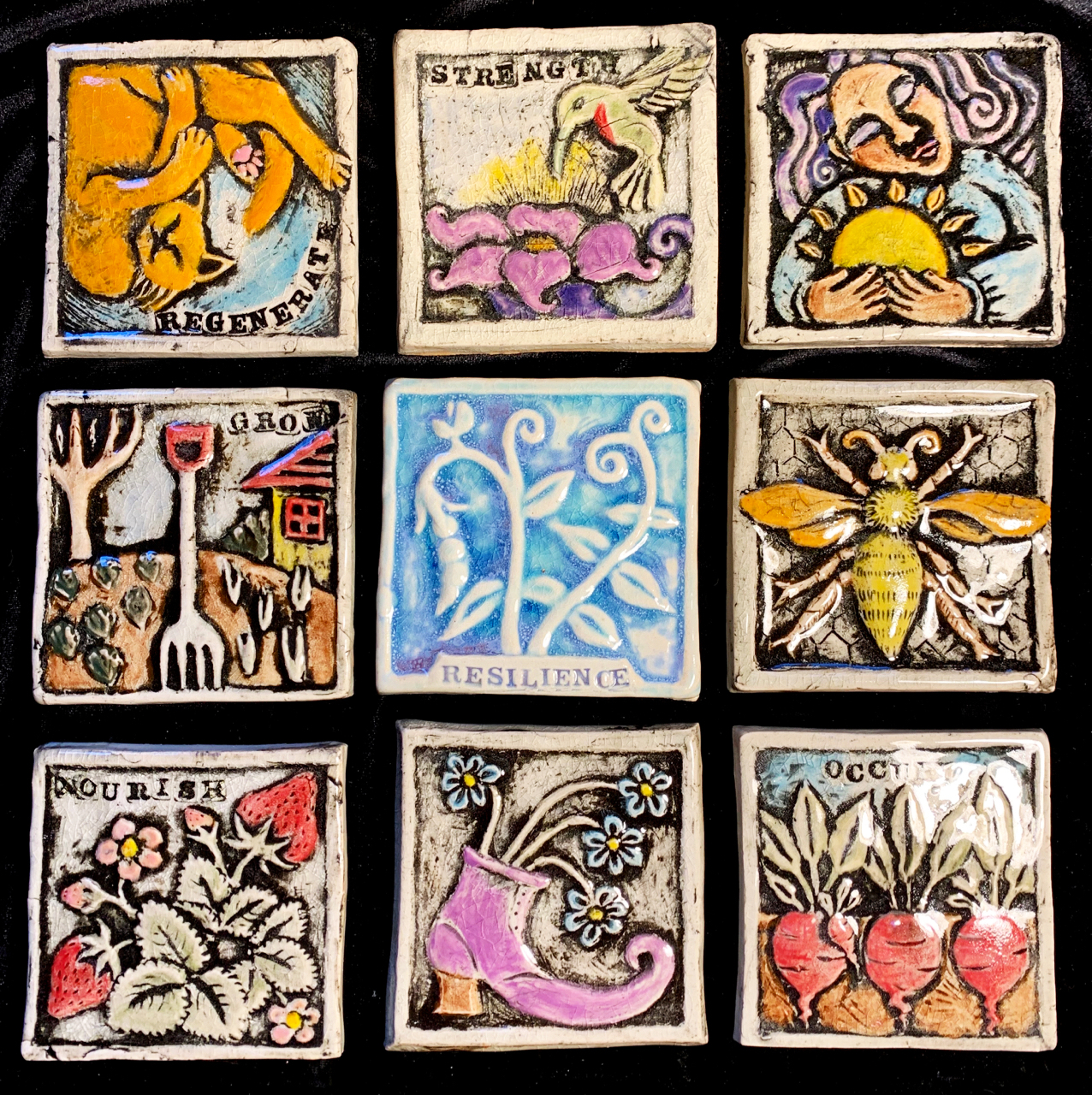
NOVEMBER
OCTOBER
Hi Everyone!
The farm tour is coming up quick. I noticed showers predicted for that morning. Yikes! Fingers crossed that forecast goes away…the farm tour will go on, rain or shine though.
URBAN FARM TOURS RETURN!
Saturday October 12, 2019 10am-4pm Rain or Shine
Is Urban Farming still alive and kicking in the Bay Area? After a three year break, Urban Farms Tours returns to answer this question. We invite you to visit 8 excellent and diverse examples of small-scale urban farming and decide for yourself. From a tidy postage stamp to a sprawling multi-use community space, the sites range in size from extra small to extra large and represent a diversity of farmers and farming styles. This years tour features some of our favorite sites from past tours, a few new gems, an urban CSA, a model school garden and two amazing community farms. You will see vegetable gardens, composting systems, rooftop garden, urban orchards, bees, greywater, seed saving and more, plus you will get to sample some of what these urban farmers are producing. Each homestead is unique in its interpretation and use of space. This will be a chance to ask questions, get answers and sample some of the bounty these farmers are producing.
FULL DESCRIPTIONS OF 2019 SITES FULL PAGE PROMO FROM THE EDIBLE EAST BAY
HOW IT WORKS Tours start on the hour at each location throughout the day. Purchase a day pass using the ticket link below or pay-as-you go, $5 per person per tour. Day Passes also available at the door. A few days before the tour you receive tour information and addresses via email. Plan your route and drive walk, bike or bus to the locations of your choice in any order you wish.
So how do I get the addresses? If you purchase a daypass, a printable pdf will be sent to you on Wednesday before the tour. If you are already on our mailing list you will receive a printable pdf on the Wednesday before the tour. Advance ticket sales end 6pm the night before the tour, but you can purchase a daypass at any of our sites on the morning of the tour. We will not send out any more programs past 9am on the day of the tour
FARM TOUR BIKE CONTINGENT
Thank you to Max Garcia for stepping up to lead the Farm Tour Bike contingent. If you want to roll with other bike folk, the contingent meet at Hoover Hawks for the 10am tour (arrive a few minutes early for a meet & greet) and ride their way North, hitting farm tour sites on the way. You are welcome to just show up, but feel free to connect with Max if you need to: (415) 766 – 7860 mx.garcia650@gmail.com
VOLUNTEERS NEEDED
The farmers may still need a few volunteers. Help at a welcome table half the day and tour free the other half day. Just reply to this email to inquire about helping!
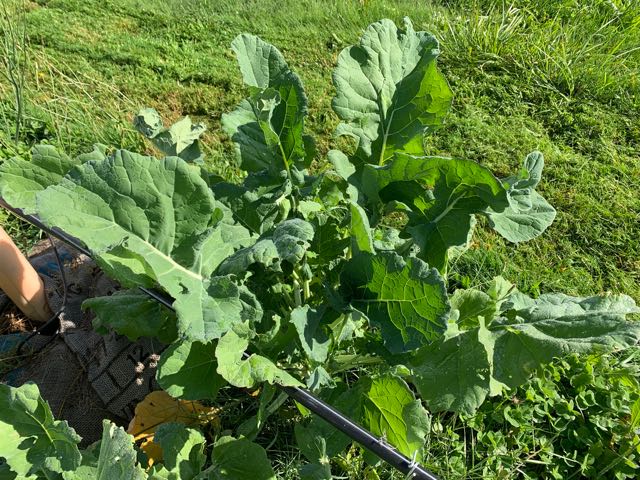
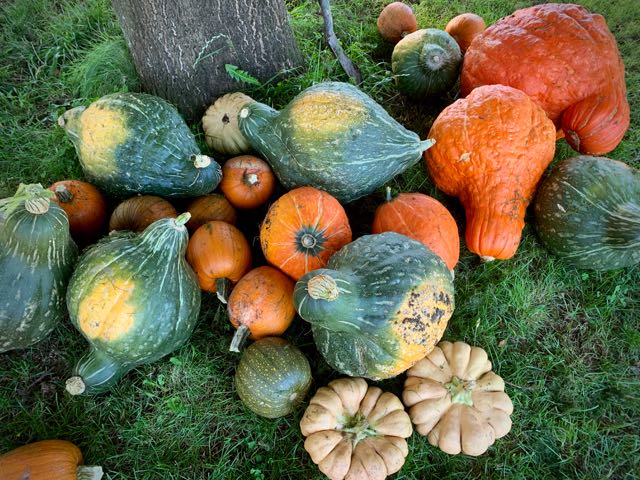 autumn bounty ~ forage kale
autumn bounty ~ forage kale
Winter Open House Teaser ~ December 14 & 15—details to follow!!
Last years shindig was such an amazing success in a fantastic secret Berkeley location….dare I hope for a repeat? Fingers crossed! I hope you will join me at another fabulous Berkeley location. Peek inside a gorgeous 1912 Grand Old Lady with pristine craftsman details and mini-homestead in the Claremont neighborhood. Enjoy tasting and perusing all the goodies that I am lovingly preparing for your pleasure! I will have lots of new fun flavors, tons of jam, mustard, shrubs, honey, handspun yarn, tinctures, tea blends and more. New for this year hand-crafted Siracha, Sweet Thai Chili Sauce and Natural Dye Kits.
News From the North
September was super busy. Our first round of lambs went to butcher and we are continuing to muck out the sheep pens en route to winter. The transition from summer to Fall seemed quick this year, with quite a bit of rain and dropping temperatures. We had crazy thunder showers and giant 3/4” hail early in the month and the regular intervals of rain has done a good job of germinating seed in our pastures. Annual arrowleaf clover, perennial red clover, mustard, daikon, forage kale, forage chicory are all up and getting established. For once the weather is cooperating! We harvested both our squash beds and I got quite a haul of delicata and butternut squash as well as some giant boston marrow squash that will likely go to the sheep. Corn, tomatoes, peppers, melons and raspberries are on the daily harvest list. I had a fun trip up to Northern Oregon for the Oregon Flock & Fiber Festival, where I spent a day selling our fleeces.


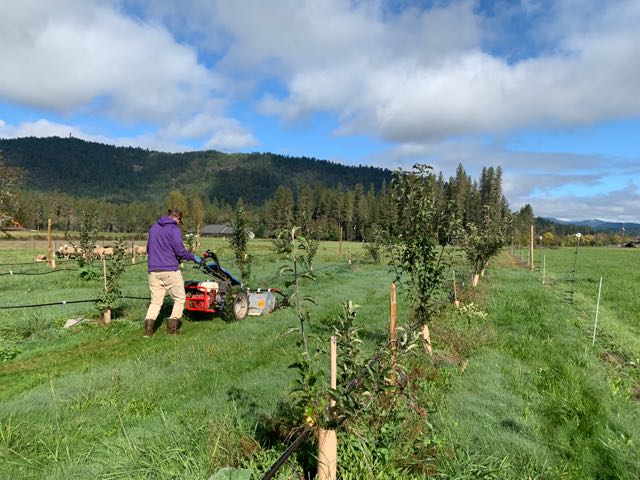
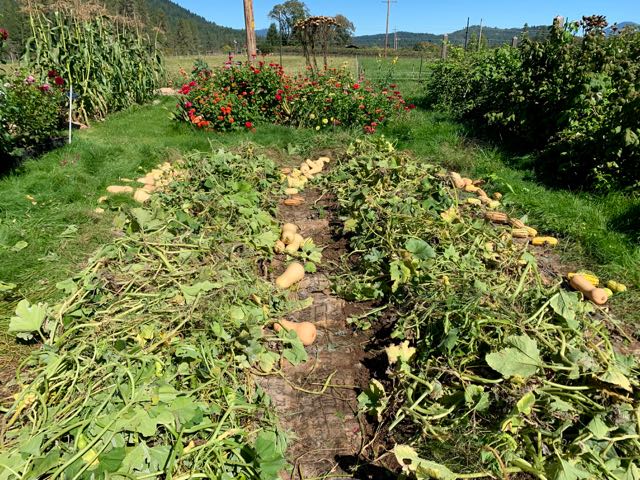 zinnias ~ perusing the fleece ~ mowing the cider orchard ~ butternut & Delicata bounty
zinnias ~ perusing the fleece ~ mowing the cider orchard ~ butternut & Delicata bounty
SEPTEMBER
Hello Bay Area! Happy September!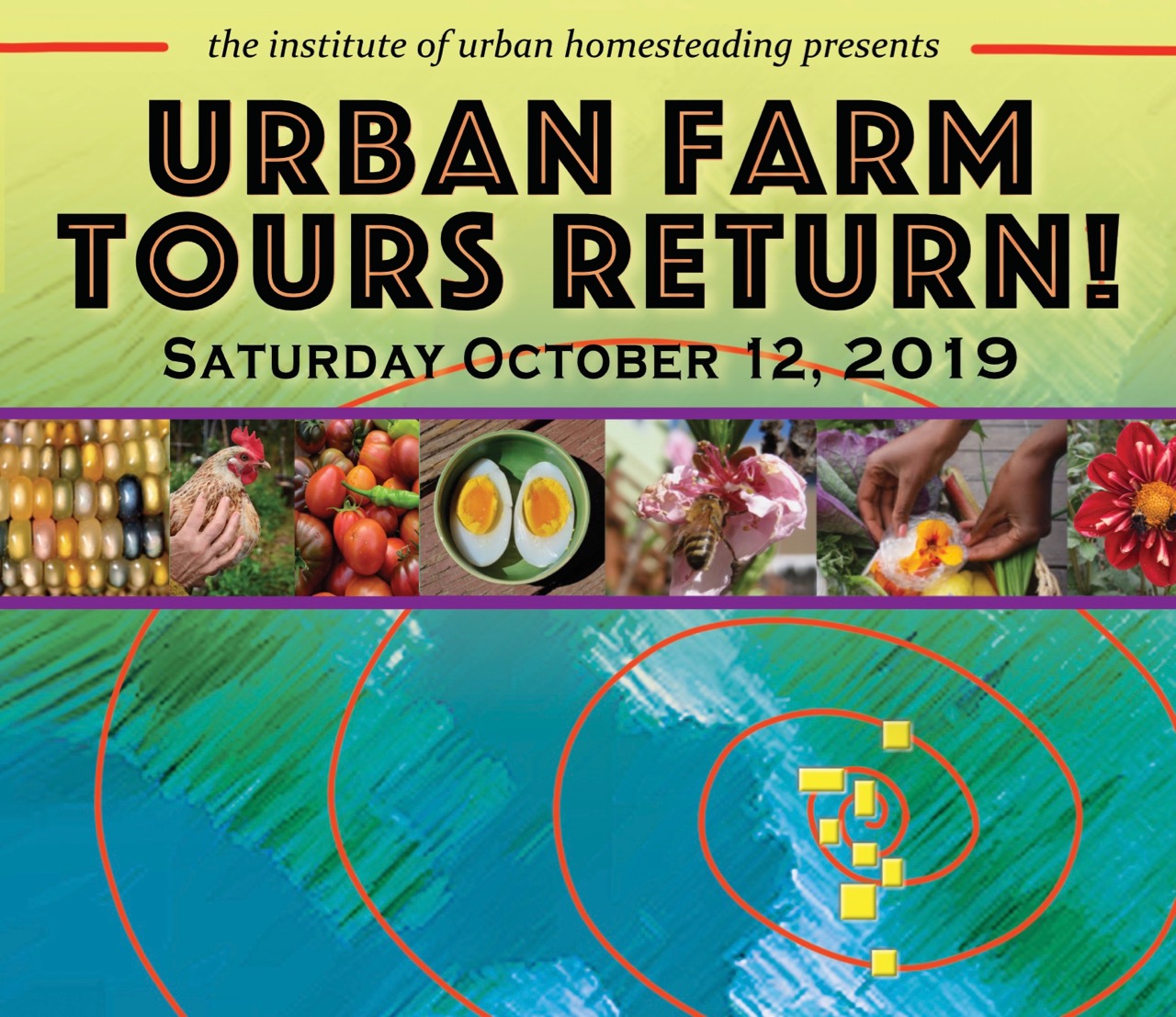
URBAN FARM TOURS RETURN!
Saturday October 12, 2019 10am-4pm
Is Urban Farming still alive and kicking in the Bay Area? After a three year break, Urban Farms Tours returns to answer this question. We invite you to visit 8 excellent and diverse examples of small-scale urban farming and decide for yourself. From a tidy postage stamp to a sprawling multi-use community space, the sites range in size from extra small to extra large and represent a diversity of farmers and farming styles. This years tour features some of our favorite sites from past tours, a few new gems, an urban CSA, a model school garden and two amazing community farms. You will see vegetable gardens, composting systems, rooftop garden, urban orchards, bees, greywater, seed saving and more, plus you will get to sample some of what these urban farmers are producing. Each homestead is unique in its interpretation and use of space. This will be a chance to ask questions, get answers and sample some of the bounty these farmers are producing.
FULL DESCRIPTIONS OF 2019 SITES
HOW IT WORKS Tours start on the hour at each location throughout the day. Purchase a day pass using the ticket link below or pay-as-you go, $5 per person per tour. Day Passes also available at the door. A few days before the tour you receive tour information and addresses via email. Plan your route and drive walk, bike or bus to the locations of your choice in any order you wish.
So how do I get the addresses? If you purchase a daypass, a printable pdf will be sent to you on Wednesday before the tour. If you are already on our mailing list you will receive a printable pdf on the Wednesday before the tour. Advance ticket sales end 6pm the night before the tour, but you can purchase a daypass at any of our sites on the morning of the tour. We will not send out any more programs past 9am on the day of the tour.
SPREAD THE WORD Please help spread the word. If you are on Facebook share the event to your page or invite friends. Or forward this email on! https://www.facebook.com/events/325173531698155/
CHECK OUT OUR PROMO IN THE EDIBLE EAST BAY
VOLUNTEER In exchange for tickets. We are looking for volunteers help to distribute posters and to help farmers at their welcome tables on the day of the tour. Posters and postcards would need to be picked up in North Berkeley and distributed in the second half of September. Distribute a stack and get 2 day passes. Day-of volunteers work a half day and attend free the other half of the day. Please email me here to volunteer.
BIKE BRIGADE? Anyone want to head up a bike brigade at the farm tour? Most of the sites are bike-able this year and it would be great to have a dedicated biker to set the route and convene a bike contingent? If this is something you’d be into, let me know and I will announce in the October newsletter.
TICKETS
Buy tickets for Urban Farm Tours Return ~ East Bay 2019
General Admission Day Pass $30
Youth Day Pass (age 11-17) $20
Children 10 and under FREE
Friend of the Farm Tour $50, gets you in to all sites, plus you get a farm fresh goodie from one of our farmers
Patron of the Farm Tour $75, gets you in to all sites plus you get a farm fresh goodie and a copy of the book “Every Day Cheesemaking” By UFT founder K.Ruby
Pay-As-You-Go
$5 per person, per site (11 and up)
Children under 10 are free
No One Turned Away for Lack of Funds
NEWS FROM THE NORTH
It is high harvest season and the stacks of jam and pickles are growing. Buckets and buckets of tomatoes, cucumbers, peppers, carrots, apples, pears, pluots and onions beg my daily attention. We have pressed many gallons of apple cider and still there’s more. I have been enjoying tending my dahlia collection this summer, cutting bouquets daily and we are slowly but steadily mucking out our sheep shlelters to build even more flower beds. The sheep are enjoying life on the pasture and we have just started breeding 2020 lambs. We have stepped it up about 3 weeks, starting in August as we have found the early lambs, born in the mud in the middle of winter, are heartier and grow better. At the same time we are getting ready to harvest the 2019 batch, with far less lambs making it than we had hoped, but nevertheless, more than last year. And finally, experiments with natural dyes continue…this month I harvested and processed indigo. I dyed with the fresh plant, preserved the plant in dehydrated “balls” and fermented whole plants to extract and preserve the color in powder form.


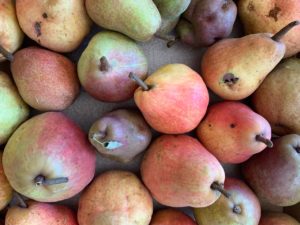
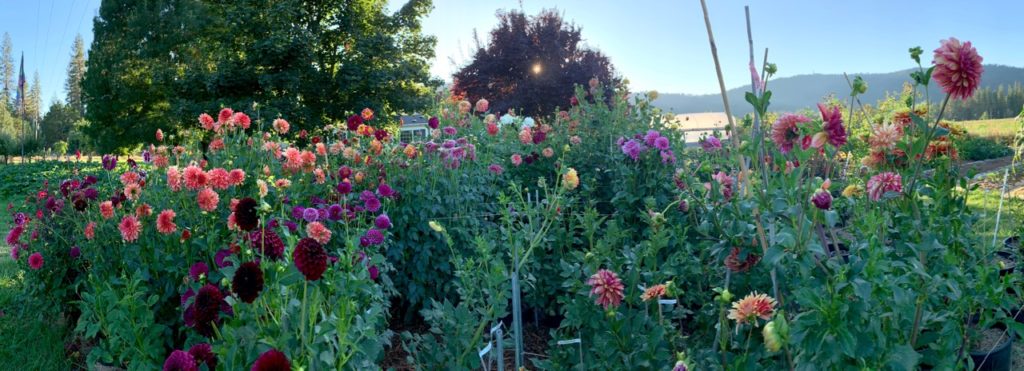
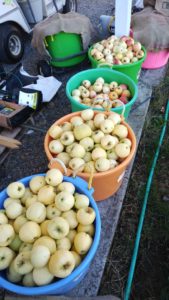
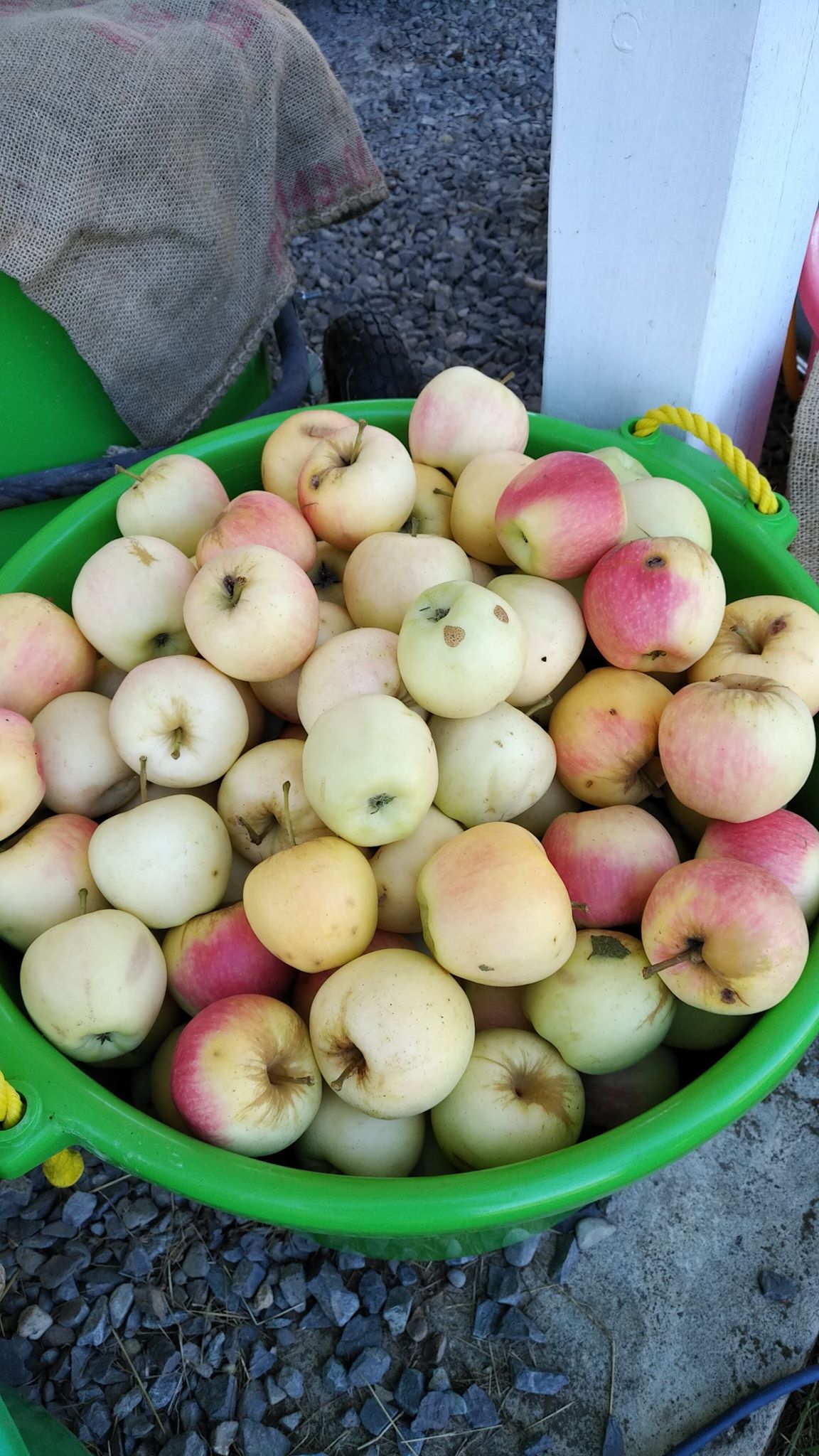
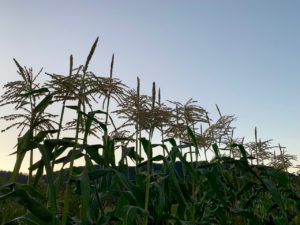
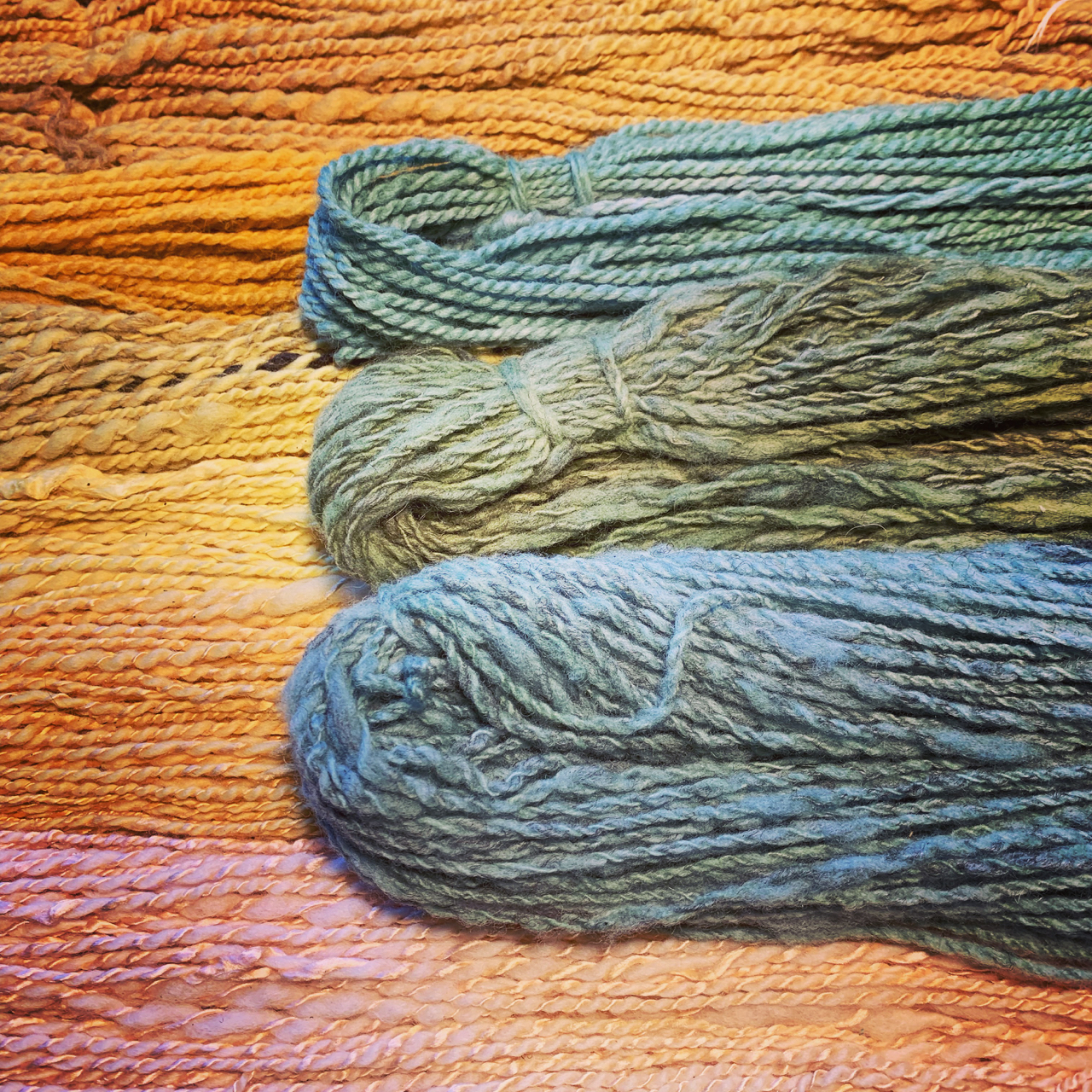
AUGUST
Hello Dear Subscribers
I hope your summer is going well. When I was a kid in Berkeley school didn’t start til after labor day and August was camping and ice cream and Strawberry Canyon swimming pool. Nowadays back to school is so early—just as we are getting some good weather—and August is all about wildfires and Burning Man. But for Bay Area urban gardeners August also means the tomatoes are coming on, the winter squash is spreading out and forming fruits and it’s time to start thinking about a Fall garden…
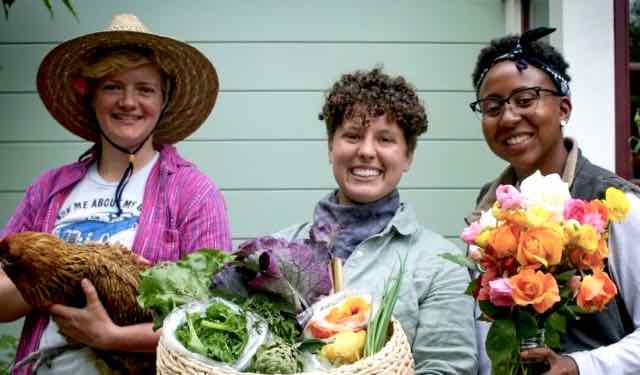
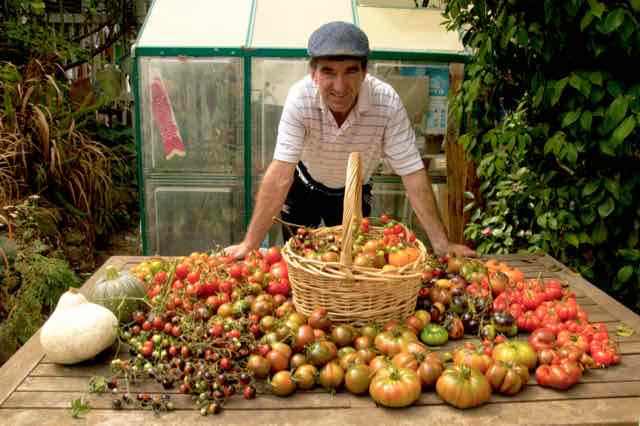
Farm tour farmers of the Berkeley Basket CSA (left) and MariLark Farms (right)
URBAN FARM TOUR RETURNS!
Saturday, October 12 10am-4pm
OK folks. There’s no going back. The tour is on. I have eight amazing sites lined up so mark your calendars.
This is the first time the tours have been offered in the Fall, so the gardens will look pretty different than in past years. The tour features sites located between North Oakland and Albany in a range of sizes from small to XXLarge and includes four home-scale mini-farms and four community collaborations, a diverse representation of the current East Bay Farming scene. There’s an event page up on the IUH site and you can click through to the event descriptions We also have a Facebook page for the event. Please do share and invite friends. And finally…tickets are on sale! There is no shame in purchasing early! We have sliding scale ticketing which allows you to pay a little more of you are able—it helps ALOT. With gratitude we offer you farm fresh goodies for pick up on the day of the tour.
FALL CLASSES
Yes…there is a small selection of classes. I am still trying to add a few and hope the schedule will be complete by September 1. The classes listed below are open for registration! listed below and open for registration.
Seeking class locations
I am homeless in the Bay Area and the longer I am away, the harder it is to find good locations to hold my classes. I still need to line up locations for many of the classes listed below. It is fun and easy to host, just add a half hour to either end of the class time for set-up and clean-up and you and a ‘mate can attend the class for free. If this sounds like fun, just shoot me an email with your location and a brief description of your space (pictures are cool too). Thank you, thank you.
Seeking Winter Open House Location
This too—Site still needed. Last years open house was hands down the best one ever! I had a new location lined up that fell through due to the hosts health issues so I am on the look out again for a great location for my shindig. It needs to be in Berkeley or Oakland. Two large rooms and kitchen access. Good parking is also a boon. I need the space all day Friday to set up and the event runs 12-4 Saturday and Sunday. Sunday evening it usually takes a couple hours to clean up. I offer in trade some combination of education/consultation , big box of goodies from my stash and/or some cash. Please let me know if you are interested or know someone who might be. A home with an urban farm attached is a bonus! Promoting you own project or business also possible.The dates are set up December 13, Open house December 14 & 15.


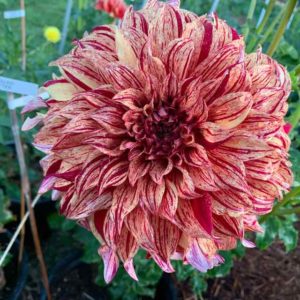 FALL GARDENING STARTS NOW!
FALL GARDENING STARTS NOW!
About this time of the summer the happy green of Spring is a distant memory. The garden is rangy and falling over ( well your might not be, but mine is ( : ). It is time to cut back the spent daffodils and gladiolus (or whatever spring flowers you grew). Things like calendula, Nicotiana, California Poppy and other perrennials can be clipped back and tidied up and will reward you with another flush of flowers. Winter and early spring greens that have gone to flower can be pulled and composted and a new flat of seeds can be started. Lettuce, Broccoli, Cauliflower, Kale, Peas, Beets and other cool season crops can be seeded now for planting out around the 1st of September. These crops will feed you through the Fall. If you get them in early enough you should have broccoli, cauliflower and peas before it get cold (ish) in late November.
The most difficult part of Fall gardening in the Bay Area is the dry dry soil which impedes baby plants. Consider drip irrigation and pulse watering. This is the process of watering in short bursts multiple times a day. If there is even a small amount of moisture in the soil, it takes up moisture more easily so the theory is to save water by never letting anything dry out. Three to Five minutes 2-3 times a day—15 minutes a day equals less than 2 hours per week and your plants will look better, feel happier and be more productive.
News From the North
Irrigate, mow, irrigate, mow, weed, harvest, weed, harvest, jam, can, pesto, pesto, pesto. The agrarian rhythm. I have been thankful for slightly cooler temperatures thus far this summer. There are fires, but not right on top of us, so a little smoke is present but nothing like the last two summers (knock on wood and hope it holds!). Our lambs are growing as we feel into our new pattern of irrigation and pasture rotation. We’ve struggled with hoof rot, so every irrigation cycle we pen the sheep and feed hay for nearly a week as we flood the pastures and then let them dry out enough that the hoof rot bacteria can’t transfer. Thanks to the diligent work of Jordan Reed our pastures have improved in diversity and palatability—we have multiple types of clover, vetch, flax,phacelia, mustard, radish and grasses. My dye garden is booming and most days I have pots simmering on the stove as I experiment with color. My berry patch is still abundant…my favorite of the 6 varieties I planted so far? Triple Crown Thornless Blackberry. I had them in Oakland and they were good, but add the heat? OMG. Giant flavor bomb explosion. The dahlia garden is in full force with some fantastic new additions and apples and pears are getting heavy on the tree, promising me hours of processing and pressing. And finally, we’ve had some visitors this summer, which is nice, as we can get a little isolated out here ( :
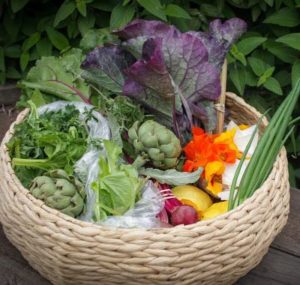
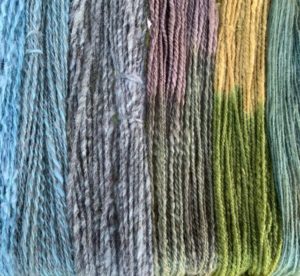
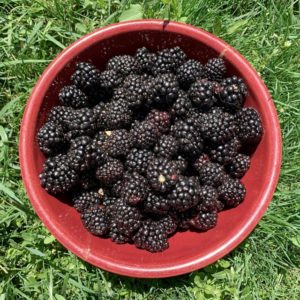
JULY
The 1st of July snuck up on me while I was catching up on my weeding. Green growing things. Lots of flowers. Long, long days. The ferris wheel of time seems to me to be speeding up these days…it will be fall and winter again before you know it. Lots of news and pictures this month plus I will try to sneak in some witchy kitchen hacks!
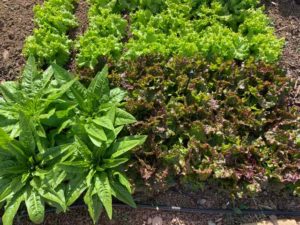

 Save the Date! Urban Farm Tours 2019 ~ Saturday, October 12th 10am-4pm
Save the Date! Urban Farm Tours 2019 ~ Saturday, October 12th 10am-4pm
I half way considered waiting until June 2020, but it just seems like it is time for an Urban Farm Tour. Urban Farm Tours is an educational event that features tours on the hour lead by local people just like you who have created productive oasis in the city. You will see micro farms, pollinator gardens, edible landscaping, creative deer roofing, water storage systems, coop designs, and much much more. We will be featuring some of the very best sites from past years as well as a few new gems. Look for a complete list of participating farms by August 1st. We will offering the convenience of paying in advance for a day pass as well as the option to “pay as you go” $5 per person per location—no inflation! This is the same price as 10 years ago when we started the tours. Tiered pricing for day passes allows you to support IUH and the farmers and enters you in a raffle for farm fresh door prizes.
Get Your Goat On
Join Jeannie MacKenzie on July 13th and learn about urban goat farming. Even if you do not plan to ever keep goats this is a great opportunity to see what is possible and visit a wonderful working homestead. You will meet baby goats and taste some amazing goat cheese. To register click the link below!
Winter Open House ~ Seeking Location
Last years open house was hands down the best one ever! I had a new location lined up that fell through due to the hosts health issues so I am on the look out again for a great location for my shindig. It needs to be in Berkeley or Oakland. Two large rooms and kitchen access. Good parking is also a boon. I need the space all day Friday to set up and the event runs 12-4 Saturday and Sunday. Sunday evening it usually takes a couple hours to clean up. I offer in trade some combination of education/consultation , big box of goodies from my stash and/or some cash. Please let me know if you are interested or know someone who might be. A home with an urban farm attached is a bonus! Promoting you own project or business also possible.The dates are set up December 13, Open house December 14 & 15.


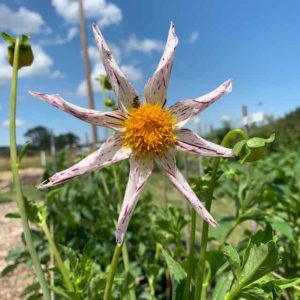
News From the North
My shearing season has pretty much rolled to an end and I am happily catching up on weeding, watering and random projects such as deep cleaning the rabbitry, braiding the garlic and patching the holes in my sheep feeder roof, which is made of recycled tin roofing—the result is quite like contemporary painting (see below). Fruit is coming on and jam batches and shrubs of early season fruits are stacking up. I have my first real harvest of cane berries, with mixed results. The tayberries were coming on gloriously until the birds discovered them….The jewel raspberries are nothing to write home about—small and seedy and surprisingly the red raspberries are struggling along—quite the opposite of how they did in Oakland. But the Marion berries and thornless blackberries are looking abundant and my fingers are crossed for a hopeful harvest (and perhaps the purchase of some bird netting would help). My first dahlias are blooming and the last lambs will be weaned this weekend.
Witchy Kitchen Hacks
Extra eggs? Did you know you can freeze them? No silly, not in the shell. I use silicon cupcake trays. Crack 2 eggs into each cupcake form. When frozen pop out and put into a ziplock bag. To use, de-thaw in a bowl the night before use. You can also pre-scramble and fill the same cupcake trays with the mixture.
Healthy homemade kool-aid. Into 1 quart Jar place 1 cup strawberries or raspberries, 1/4 cup lemon juice and 1/3 cup sugar. Pour boiling water over. Cap and shake until sugar is dissolved. Let cool. Place in the fridge. After 24 hours strain & drink.
Fancy Garlic Spread–better than butter! Cut the top of a whole head (or heads!) of garlic off (the top is the opposite side of the knot of roots). Drizzle olive oil onto it and a dash of salt. Bake at 350 until soft. Let cool, smush the softened garlic out and mash. Yummy as is or add a tiny amount of minced basil or oregano.
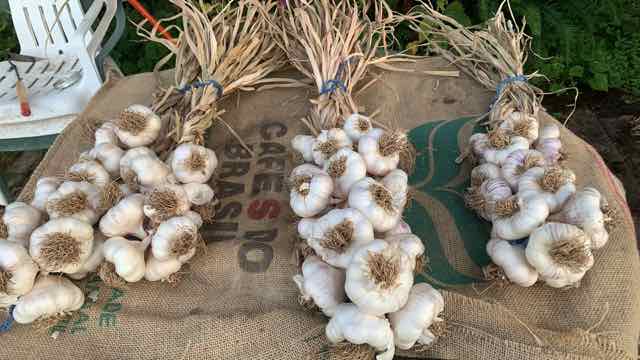

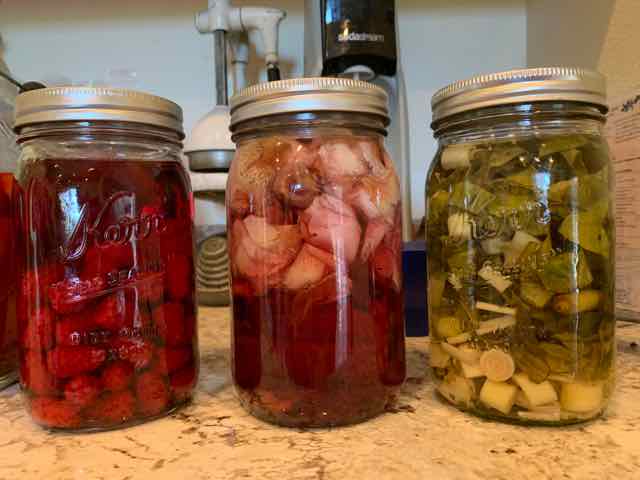
JUNE
Hi Everyone…It’s June June June
Thoughts of beach-bumming, river-rafting,festi-going, beer-drinking, fruit-canning, tomatoes-ripening and abundant farmers markets along with worries of fire season, watering the garden and how to get it all done…We have been quiet here at the Institute, with a long pause and then just one class in July. My farm partner is trying to get to South Carolina for a 50th wedding anniversary this summer which means I won’t know for a bit whether I can get away to teach a few summer classes in the Bay. Will certainly plan some Fall offerings and definitely a Winter Open House—last year was a blast!
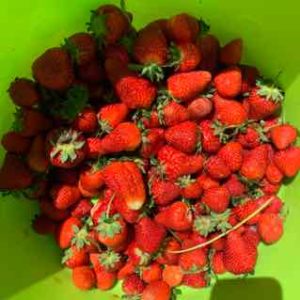
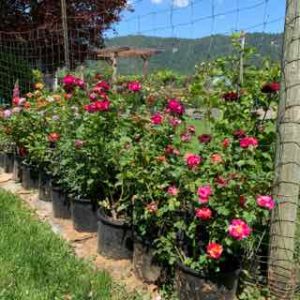
 strawberries, roses and crazy gi-normous delphiniums
strawberries, roses and crazy gi-normous delphiniums
Urban Farm Tours ~ likely to happen ~ lots of questions ~ invitation to participate~ RESPONSE REQUESTED!
Still thinking of putting on a weekend on Farm Tours….I wanted to do the end of September, but I have a conflict with that last weekend…earlier than that the end of summer/back to school vibe makes things hard and later? What do you all think about October 5/6 or 12/13? Do you know of conflicting events during those weekends? Would you be excited for the Farm Tours? Do you think the moment is past and people wouldn’t be so interested? Very curious to hear whether you think it is worthwhile to expend the energy. What types of things would you like to see? Would you like to see a “Best of the Farm Tours” type event? A day of community urban farm projects? Would you drive as far as Walnut creek, El Sobrante or Vallejo? Or would a core East Bay tour be more interesting? Finally, is your little urban farm one I should consider? If so please reply with the following: 1.Name & contact info 2. Location/address 3. Name of your farm if there is one 4.Size of your lot and approx size of area farmed 5. Short description of the features 7.Pictures if you have them. Thanks in advance
Pasture Raised Lamb ~ Get on the List!
We are preparing to sell pasture raised lamb direct to the consumer this Fall/Winter. I have attached a pdf about our lambs at the end of the newsletter. The lambs are delivered frozen, cut, wrapped and labeled according to the cut. They are an excellent size for a single household 30-45 pounds finished weight, which fits more or less into a normal sized freezer— about the volume of a small milk crate. The price per lamb will $225-325 depending on finished weight. We sell full lambs only, standard cuts (rack of lamb, leg of lamb, shanks, chops, stew meat, ground) and try to include the organs if we can grab them at time of butchering.
We are taking names now to gage interest. In the Fall when we know exactly how many we have available, we’ll send out a request for a deposit to the folks on the list. First come-first serve. The lambs are brought down to the Bay Area and you pick up at a pre-arranged time and location. Your balance is due at pick up. While the price per pound on these is somewhat higher than some other sources, we pay a high premium locally for slaughter, cut & wrap ($125 per animal), not to mention the whole process of raising the lambs, plus all the driving to drop off, pick up and deliver to you. We are not getting rich. Our hope is that through the sale of lambs we are able to pay our feed bill and break even on the project. We appreciate your interest and hope to provide a truly delicious and worthwhile product. To get on the list, just reply to this email to let me know if your interest.
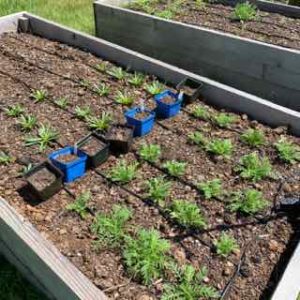
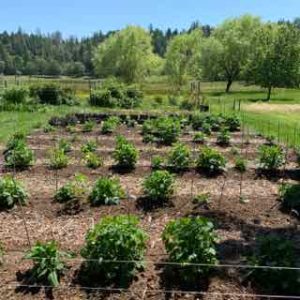
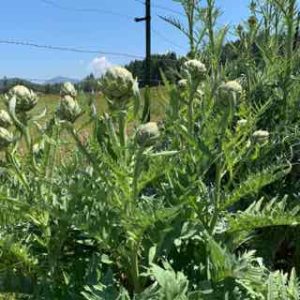
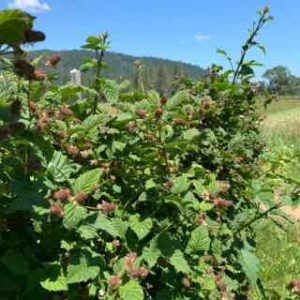 dye plants, dahlias, artichokes and so many Tay Berries!
dye plants, dahlias, artichokes and so many Tay Berries!
News From the North
The late rains have made for lots of grass. I have been mowing, weed whacking and weeding like crazy. The roses are in full force, the first strong flush of strawberries is in and cherries are soon to follow. The dahlias popped up from their winter sleep, bushy and green and the summer garden is slowly taking shape. I have been busy all May shearing sheep & alpacas. Nice to have some local income as it has been a long hard dry spell here. The work is physically demanding but it gets me out into the local community and onto small farms and homesteads which is fun.
Growing a dye garden
Last year I grew too much food. First world problem, right? There was a bumper crop of cucumbers—I think I harvested literally 3-400 fruits and they mostly went to livestock. I planted the extra tomato starts instead of composting them or giving them away so had far too many tomatoes to use or process. I even had too much basil and pooped out on making pesto before it was exhausted. This year I made a commitment to try to only grow what I can eat or preserve and thus I have space in my 9 raised beds for something else. With my new passion for wool and spinning I thought it would be fun to try to grow a dye garden…I started my seeds to early so some got frosted and I had to start over. The warm growing season here really only goes from memorial day through early October—about 4 months. But so far a few of the plants are doing well. I have Hopi Dye Sunflowers, Dyer’s Coreopsis, Marigolds in a few colors, Safflower, Alkanet, Madder, Woad, Purple Basil, Indigo (Two types), Dyer’s Chamomile and Weld. Additionally around the property I have Dock, Hollyhock, St John Wort, Yarrow, Walnut, Pokeweed and Elderberry. All these plants yield color. The easiest color to grow is yellow and the most difficult, interestingly, is green. Green is usually made by overdying yellow with indigo or woad. I can see I have steaming pots of dye bath in my future. We’ll see. If you are interested in Natural dyes, the book I have found the most thorough and easy to follow is called Wild Color.
MAY
Hello Everyone
Sending off the May newsletter a bit early so that I can plug my CANNING EXTRAVAGANZA workshop on Sunday April 28. This is a really fun class—we learn everything about the process of canning and then can up 3 different projects to take home. It will take place In a stunning Oakland Hills home/homestead. Also coming up is a tasty offering from Jeannie MacKenzie, who was featured in the SF Chronicle article linked below—CHEESE & CRACKERS:A DAY AT PINEHEAVEN FARM…you will visit the goats and chickens and learn how to make delicious cheese and sprouted crackers using the whey. Taste and make! I have a short and sweet newsletter here this month as pressed for time on my way down to California to shear, teach and visit good friends.I’ll try to write a nice juicy one for June to make up for it!
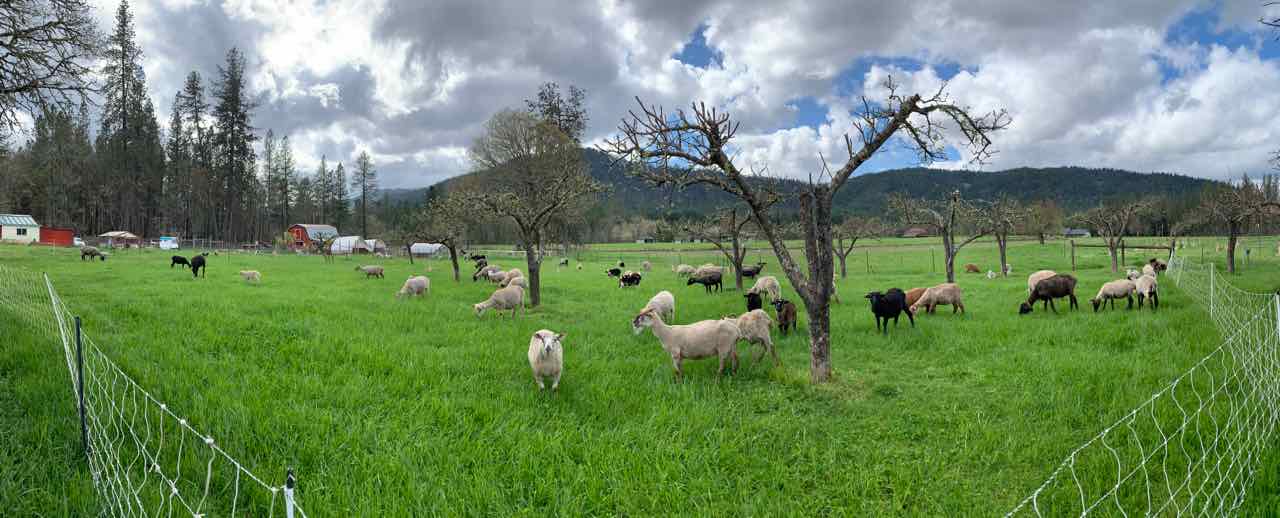 Our workforce: mow & fertilize!
Our workforce: mow & fertilize!
In The News
Someone wrote an article about the current state of things. I would say the analysis is a bit thin (500 words or less doesn’t get you far), nevertheless, nice to see urban homesteading in the news!
News From the North
It is shearing season here, so my partner and I are tag teaming it. We get about a day and a half between trips to say hello and touch base and deal with scheduling. The grass is growing, the dahlias are in the ground and the veggie garden is still getting off to a slow start. This year I am excited about growing a dye garden and learning more about natural dyes.
Summer and Fall
I am unsure as of now what programming will be offered Summer and Fall. I am still hoping to pull together a farm tour for the Fall but haven’t gotten a start on it yet. I am hoping to make a trip down in June for the express purpose if visiting farms and getting it together!! I should have some info either way by the beginning of June.
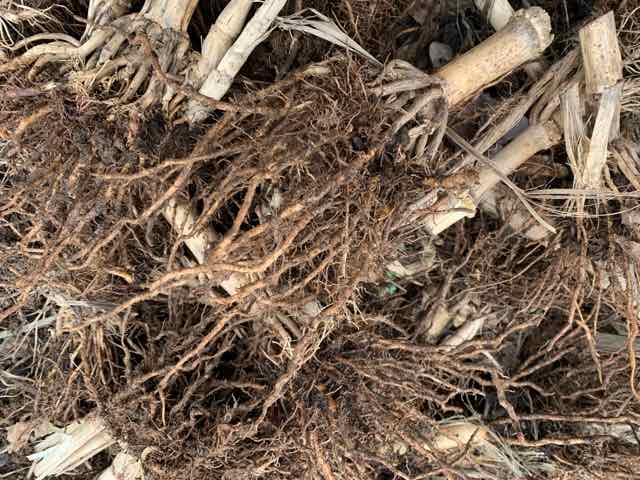
clearing out last years roots to make way for this years garden.
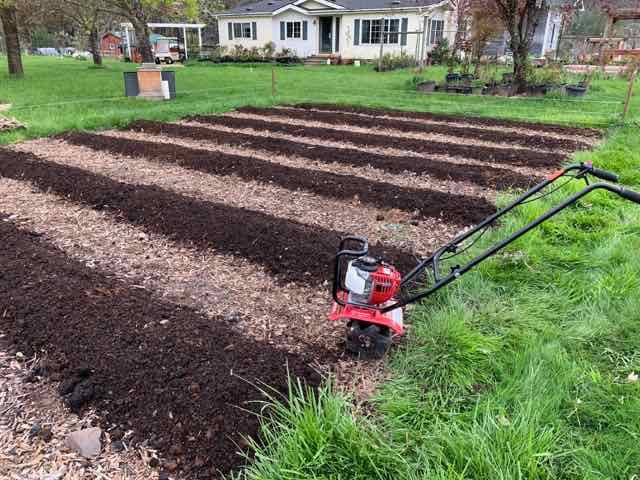 the dahlia patch, ready for planting
the dahlia patch, ready for planting
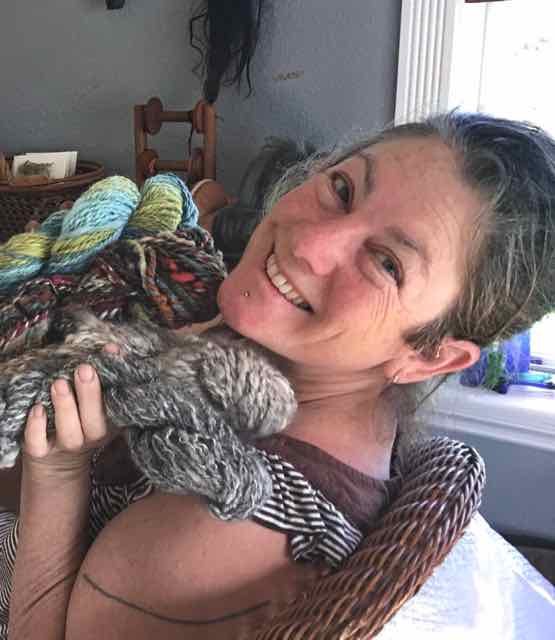 a recent picture with my hand spun yarns
a recent picture with my hand spun yarns
APRIL
Hello and Happy Spring!
I returned from my California weekend, teaching Soapmaking and Beekeeping and hit the ground running. So much Spring is springing that it is already nearly a week into the month as I sit down to write. The demands of an agrarian life have little to do with dates and clocks and mostly to do with whatever is happening right here, right now. So it has been all about using dry days to mow, weed and prepare garden beds, tend to newborn lambs and bunnies and yesterday a break in the rain was the moment to shear our flock. I am swimming in fleece and seeds at the moment (there could be worse things, right?).
April in the Garden
It is now time to get your main summer garden into the ground. This can include seeding warm season plants (it is not too late), putting in a few last cool season crops and purchasing starts. The cool season crops that are still good to seed/plant are potatoes, peas, beets, lettuce and spinach The great warm season plants for the bay area are tomatoes, basil, beans, cucumbers, summer & winter squash, lettuce, carrots, hot peppers and onions. Marginal summer crops that can still be fun to try are corn and sweet peppers. To prep your beds add 2-3 cubic feet (a wheelbarrow full) compost to each 4 x 4 bed and till well. The trick to tilling clay is the correct amount of moisture. Clay soil with the right amount of moisture is neither mud, nor rock hard. It should have enough moisture to crumble in your hand when crushed. To achieve this either wait 7-10 days after a good rain, or water thoroughly and wait 24 hours. Another method of cultivation is to lay down cardboard and mound grass, leaves, manure and /or compost on top of the soil. You can plants easy crops into it this year while it breaks down (squash or potatoes work well) and till it in next year.
News From the North
It is spring and shearing season here and everything seems to happen all at once. Suddenly my garden is full of weeds, the grass needs mowing, the lambs are growing, the dahlias need planting, shearing season must be scheduled and the rain keeps coming. I had 4 litters of bunnies last month and our lamb tally for the year is 44 (46 total live birth, two didn’t make it for reasons unknown) and just today we are sorting into “keep” “sell” and “meat.” Last month I had fun participating in a Facebook farm photo challenge, so I took a ton of pictures…some are posted here but you are also welcome to look at my facebook page—the farm photos are public.
Upcoming classes
We have just a couple classes coming up this month. Please note that drip irrigation has been cancelled and Canning Extravaganza has a time change.
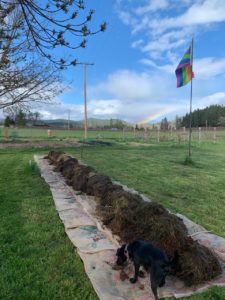
MARCH
Oops! I guess I missed March 1st, 2nd, 3rd, 4th, 5th……… March always seems to sneak up because February is a short month, but it didn’t help we had snow, collapsed sheep shelters, power outages and lots and lots of mud. Seems the stories are similar everywhere, with flooding in Sonoma County and far more snow and power outages to the North. Isn’t it March that comes in like a lion and goes out like a lamb? Speaking of lamb….read on!
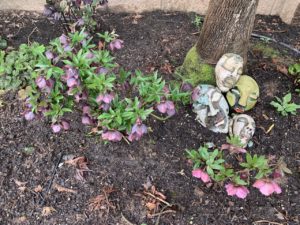
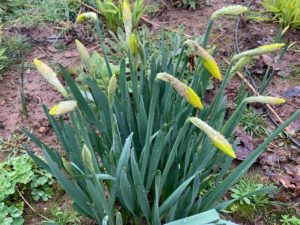 Hellebores & Daffodils
Hellebores & Daffodils
March in The Garden: “Start Dos and Start Don’ts”
If you haven’t started your cool weather crops in flats or six packs yet, you still have time, but now is also a fine time to head to one of the great local nurseries and purchase spinach, lettuce, broccoli, cabbage, cauliflower, collards, peas, kale and beets. When purchasing started plants, make sure the plants look like they “fit” the container you are purchasing them in. Believe it or not it is better to buy starts smaller than larger—as small plants are not yet “root bound” in the pot and will set down good roots before going on to produce the food you want to eat. I always look for six packs that have multiple seedlings in each cell to get a good bang for my buck. To plant, just pop the cell out and loosen the dirt and plant the individual seedlings. A recent six pack of spinach I bought ended up having over 40 plants! With the exception of beets, root crops do not transplant well…so don’t be tempted by carrots or other root crops as starts. Turnips, radishes and beets are started easily from seed and it is more economical to do so. Also don’t both with any warm season plants yet. Unless you have a greenhouse, it is far too early on the west side of the coastal range for tomatoes, beans, peppers, basil or cucumbers. You can put them in the ground and they won’t die, but they won’t do much either. These plants can be seeded now, with an assist of a seedling heat mat or greenhouse, and can go outside in the ground April 1. April 1 will also be a good time to purchase and plant warm season starts. No matter how early you start tomatoes in the Bay Area, they won’t produce until July or August…so no sense putting them in the ground when the nights are still below 50 degrees. As well as cool season annual vegetables, perennial flowers and herbs can be purchased and planted now as well. On these it is somewhat more acceptable for them to have established roots, but if they have curled around into a hard mass in the pot, they should be broken apart and the plant left to soak in water for 12=24 hours before planting in the ground.
Slugs and Snails Oh My!
If April showers bring May flowers, March rains bring April slugs. Slugs and snails are some of our worst garden pests, with no natural predators. They love to hide in mulch, under the edge of planter pots and fences and insides of heading greens like cabbage and lettuce—and they can mow down a bed of starts in an evening. With a concerted effort you can diminish the population or dissuade them from eating your baby plants.
1. Go out with a headlamp at night when they are active and hand pick them off your plants. If done every other night for a couple weeks you can significantly diminish the population and interrupt their breeding cycle. The best depository for those collected is the chicken run, but if neither you nor a friend owns chickens, you can kill them by pouring salt on them and dump them in the green bin.
2. Use copper tape. Since slugs live in the soil, even putting round your raised beds may not work. I have had the best success protecting individual starts. Cut rings from plastic yogurt containers and gallon size plant pots. Adhere the copper tape to them (often comes with sticky back). Push the rings into the soil around tender starts. For new construction of raised beds, staple copper mesh along the rime of the beds before adding your soil.
3. Crushed eggshells. Crumble the dried egg shells around the base of the plants.
4. Chickens love slugs and snails. If you have chickens, let them run in the garden for an hour before dusk. they will focus on eating the bigs and leave the plants alone.
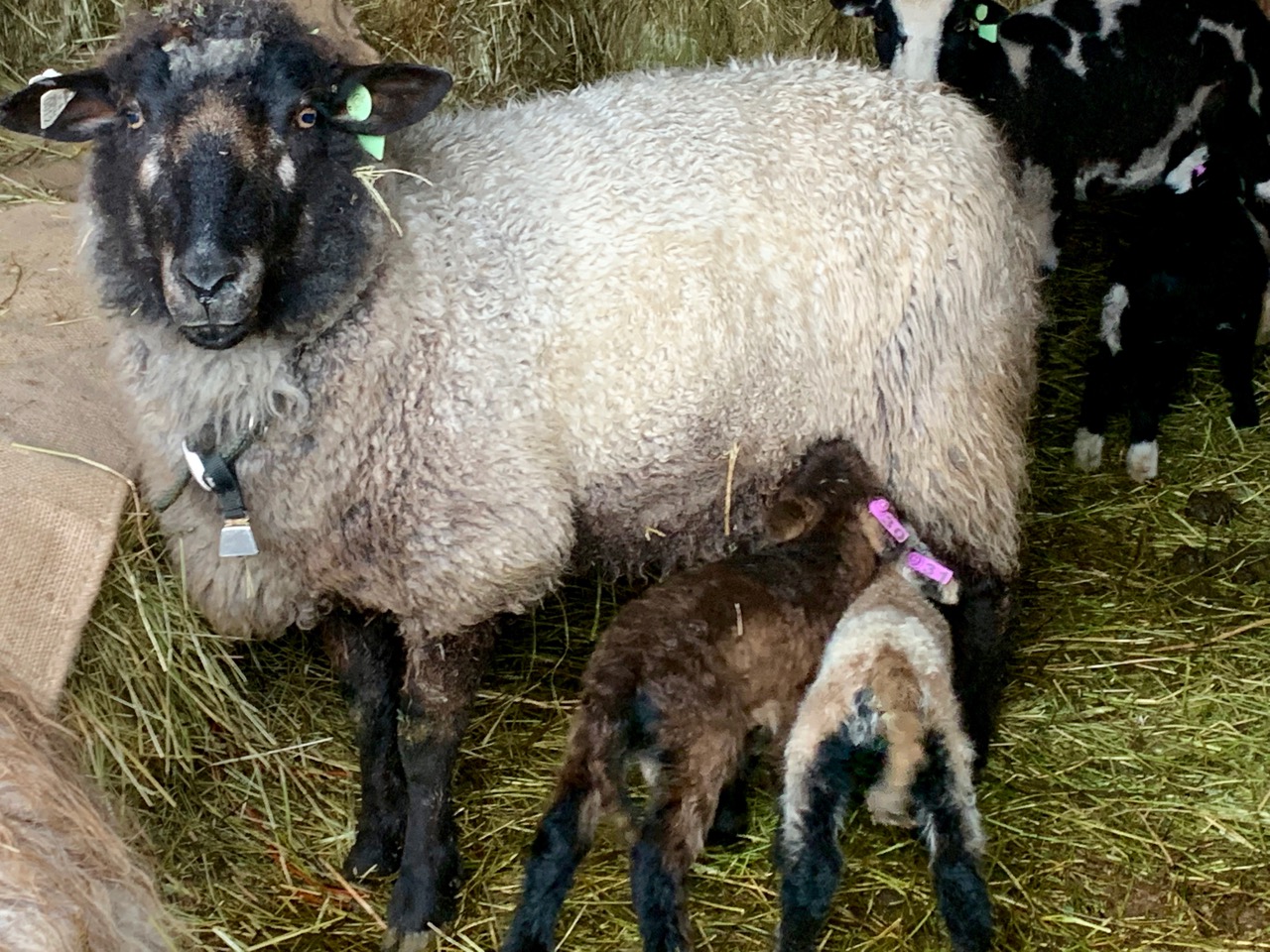
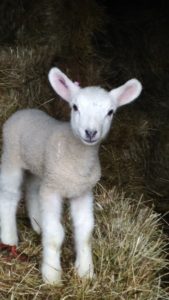
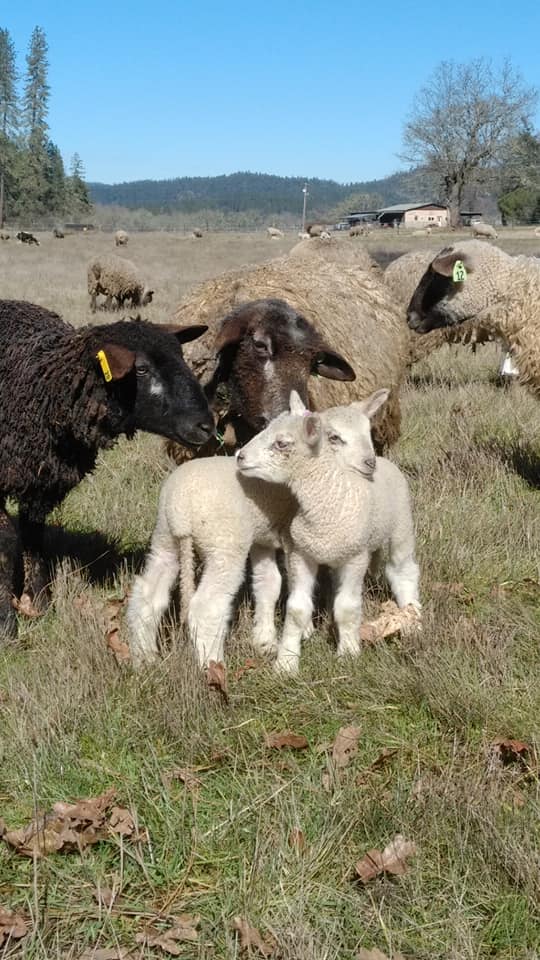
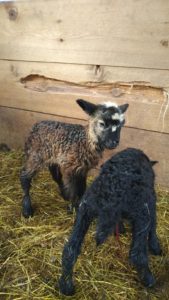
Lambs, lambs and more lambs! We used two different rams. Our main flock was bred to a Blue Faced leicester, which is a fine wool breed. Our primitives were bred to a Navajo Churro, which is a coarse wool breed included in the Ark of Taste. The first 2 pictures are BFL X babies, the third picture are Churro X lambs. Photo Credit: Jreed
News From the North
It has been exciting and muddy around here! The month of February yielded nearly 9 inches of precipitation. We had rain and snow and rain and snow again. It also yielded 31 lambs! We are about 2/3 of the way through our 7 week lambing season, with another 12 ewes left to lamb. It has been a bit of a struggle to lamb in the rain and mud, without quite enough infrastructure. We are juggling mamas and their babies in and out of temporary lambing “jugs,” to allow new mamas time to bond with their lambs and to provide them extra feed for their first few days of lactation. It is amazing to see the babies standing up and nursing within moments of popping out. We are expecting about 50 lambs total. Some will be sold as breeding stock and we will have a good number available as pasture raised lambs available directly to the consumer. I’ll be sending out a dedicated email to ask for lamb reservations in the Fall. In other news, we finished pruning our fruit trees, grapes and roses (no small feat!), dug the holes for the final planting of cider apples and pears and have cleared a section of lawn to become a new section of garden. The daffodils are just starting to pop here, hellebores in full bloom, columbine is putting out new greens and peonies are just peaking out from their winter sleep….
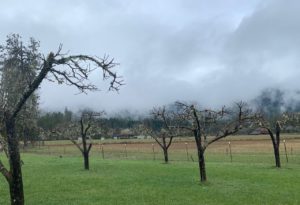
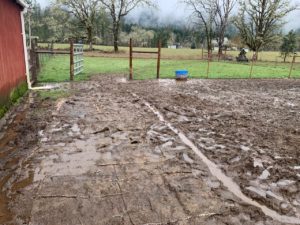
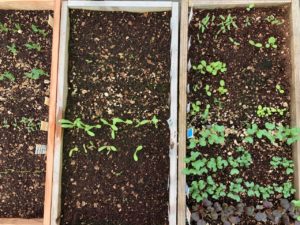
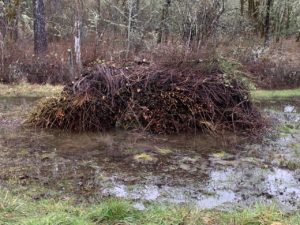 Top left: A properly pruned apple trees looks like a picture from Dr. Seuess
Top left: A properly pruned apple trees looks like a picture from Dr. Seuess
Top right: Mud, mud and more mud…we have been trenching & laying down burlaps like crazy
Bottom left: cool season seedlings
Bottom right: A giant stack of fruit tree pruning wood
FEBRUARY
Hello Urban Farming Friends!
I hope you are enjoying a nice spot of rain! With the dark mornings and rainy days I am moving a bit slow this month and getting this off to you a few days late. But I need to wake up and wipe the cobwebs from my eyes as lambing season is upon us here as well as time for fruit tree pruning and seed flat sowing. Spring will be here before you know it and I am hoping to see some of you in my upcoming classes. Semi-retired, but hopefully not forgotten!

February in the Garden
Time to get moving! February is ideal for planting bare root fruit trees and berries, for pruning before the fruit trees bud out, and for getting seeds started with a little help from friends. For good fruit production, variety is everything. Beware cheap offers from big box stores and do your homework! Big box stores often have national distribution and don’t select varieties for the mild bay area winters. Many apples, for example, need far more hours below 45 degrees in the winter than the coastal climate provides. A great list of “low chill” varieties can be found here. Once you have selected your trees (and berries) care and training is critical for them to get a good start. Want to know more? Please come to my Urban Orchard Intensive on Feb 23. It is going to be a glut of fruity information, including selection and planting, pruning and care and grafting for increased variety. February is also a great time to start vegetable seeds in flats for planting out later in the spring. This can be done outdoors with a heat mat made for the purpose or indoors with both heat and light. I will be talking about seed starting and giving you hands on practice in my course The Real Dirt: Intro to Organic Gardening On February 24th. If you miss out on that class I will be offering Raised Bed and Container Gardening a little later in the Spring.
Can You Help Spread the Word?
Postcards and social media only go so far. Everyone knows real power in advertising is word-of-mouth. If everyone on this list would forward this newsletter to 10 friends, my readership would spring from 4K to 40K. Of course I know not everyone will do this…but if you have taken a class, or if you enjoy this newsletter, would you consider a one time forward to 5-10 friends with a personal note of recommendation? It would help a lot!!
Coffee Roasting at Home
We get stacks and stacks of free burlap coffee bags from a local roastery and sometimes they come with enough beans left in them to use. Home coffee roasting requires no special tools. Some folks use an air popcorn popper…but I must have gotten rid of mine in the move, so I recently “roasted” some beans in a cast iron pan on the stove. Here’s how: Turn your heat on medium high and turn the vent fan on over your stove. Place the beans in the pan one layer deep so that every bean is touching the pan. As the pan heats up, start to shake it, just like you would popcorn. After 3-5 minutes you will start to hear pops and cracks, this is called “first crack”. After this, the beans will start to turn color quickly. Continue shaking the pan until the beans reach the desired color-or a little short of that, as they will continue to brown as they cool. Once you are close to the color you like, toss the beans into a colander and set them outside to cool. Shake them in the colander to remove the chaff. Let sit overnight to off-gas CO2 and mellow. That’s it. You can get raw beans and more roasting information can be found online at Sweet Maria’s.
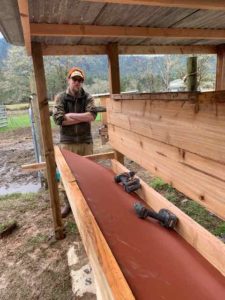
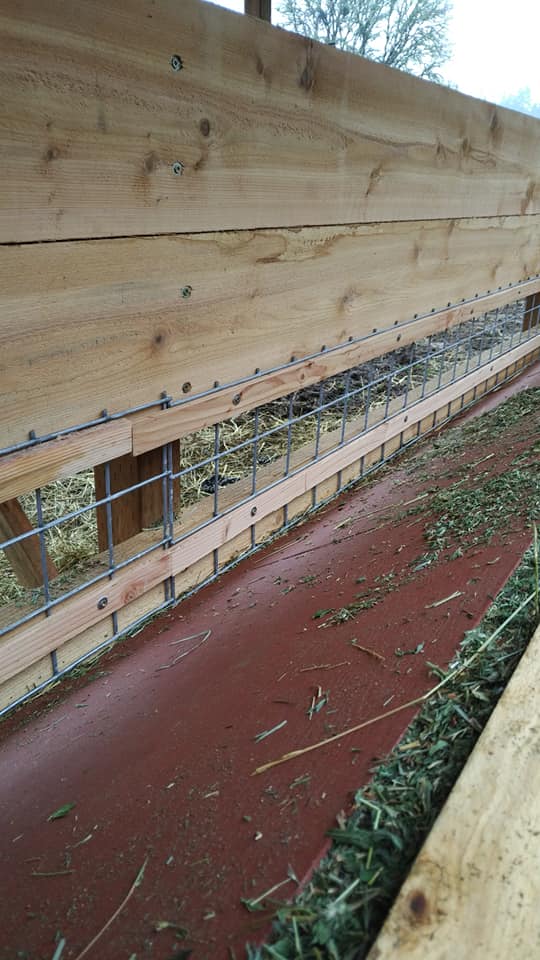

News From the North: Fun With Sheep
Our ewes are “bagging up” and the first lamb is due-maybe even today! We spent a day with friends crutching, trimming hooves and vaccinating our pregnant ewes. Crutching, also called tagging, is the process of clearing the wool from the belly, udder and crotch to allow for ease of lambing and for lambs to be able to find the udders for nursing. Additionally, we just finished building a 32 foot long fence-line feeder. This makes it easier to feed, spread out the hay so more sheep can feed at once and prevents the hay from getting everywhere. We have a limiting panel in the feeder which helps with wool quality as it prevents the sheep from pulling out too much hay at once, which keeps hay off their fleeces. We are hoping for around 50 lambs this year, which will be available for purchase for the freezer in October or November. I’ll be sure to let you know when we are taking names for the waiting list!! We also took full fleeces off a few of our lambs and ewes and will have raw fleeces available as well as tanned sheep skins. Let me know if this is something you are interested in and I will send you information in a separate email ( :
Wanna Teach?|Yes—we are still in semi-retirement here, but I am curious if there is anyone out there who would be interested in teaching a few classes we get requests for: Butchery & Sausage Making, Hugelkultur, Food Forests, Straw Bale Gardening, Mushroom Cultivation. Just hit me up with an email if this is you or you know someone capable of teaching these topix-thanks!!

Shear Beauty

Yours truly crutching a ewe

Crimpy wool like this gives wool products their stretchiness
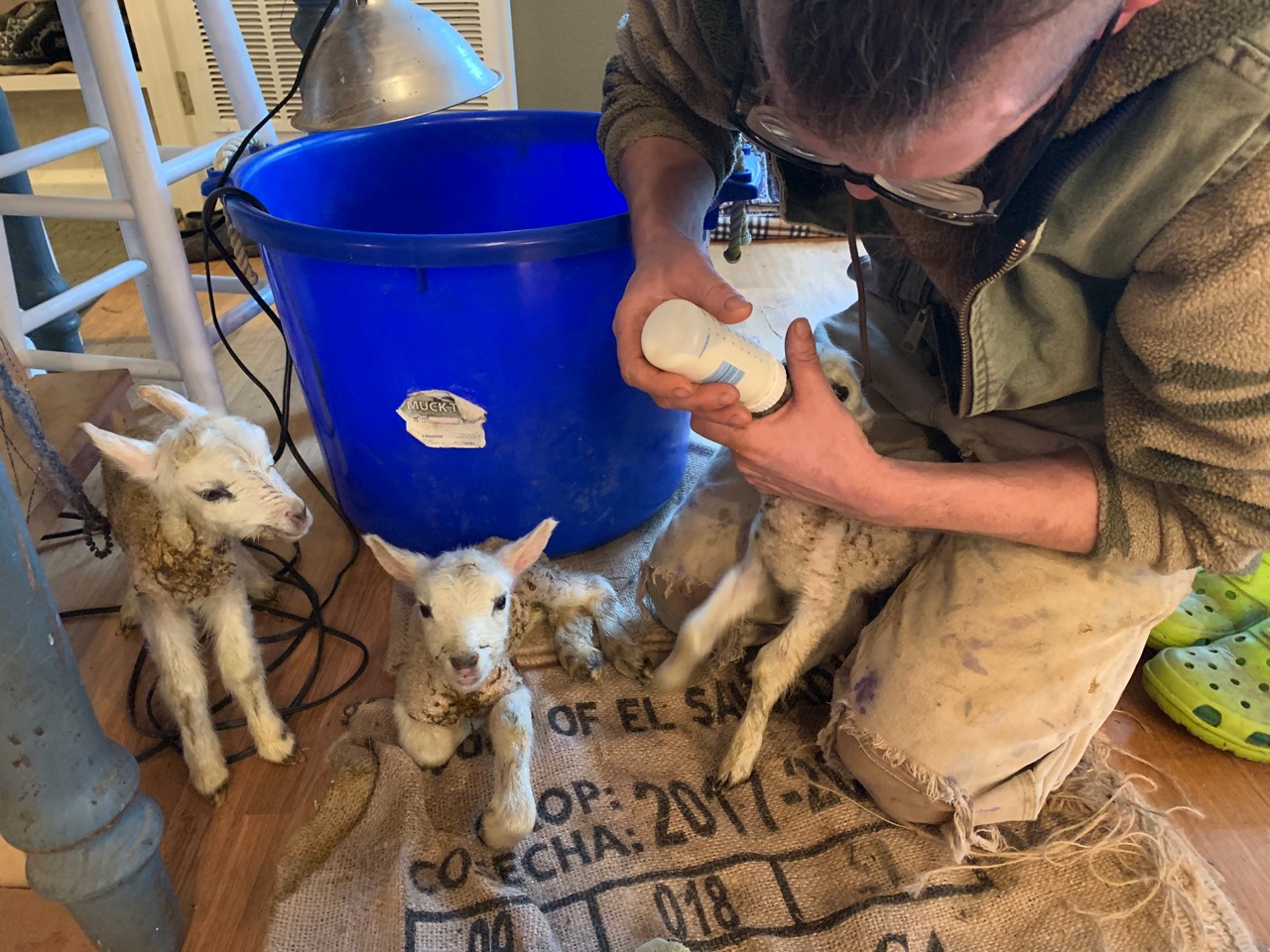
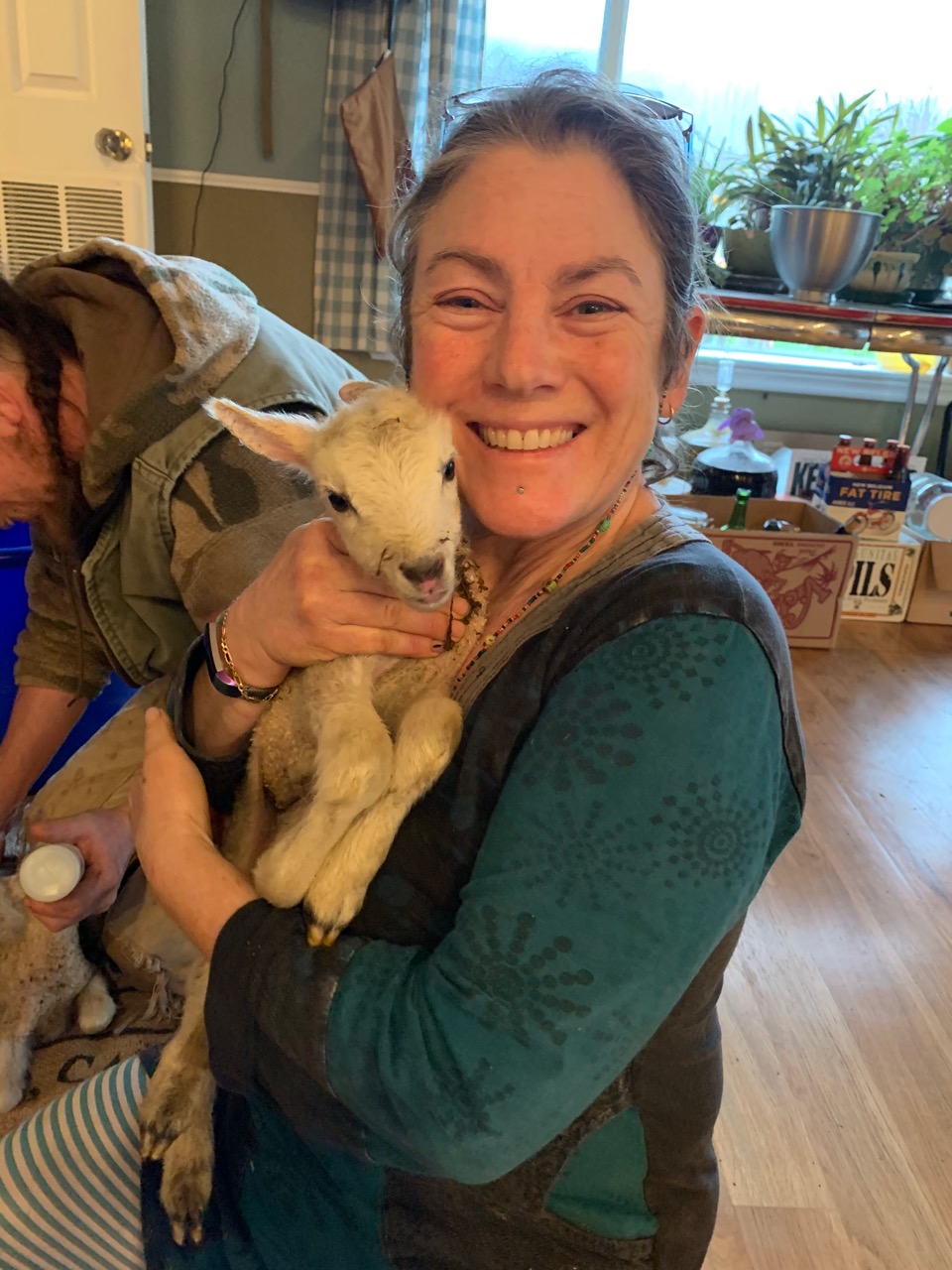
one little survivor
JANUARY
Greetings All and Happy 2019!
With below freezing temperatures and lots of precipitation, we are enjoying slow mornings and much needed down time here in Southern Oregon. Today as I sit down to write mid morning we have our first snow, slushy and wet as it hits the ground, barely sticking. I am glad to see plenty of showers predicted for the Bay Area…let’s keep things flowing! I want to thank everyone who came out to our 2018 Winter Open House! What a grand success…so great to see you all and sad not to have been able to chat with each of you personally. I sold out of most of everything—jams, many tile designs, dried fruit, mustard, shrubs, cordials, honey and so much more and was happy to see so many goodies go to friends and family. Also big thanks to the Johnson family for offering their wonderful home.
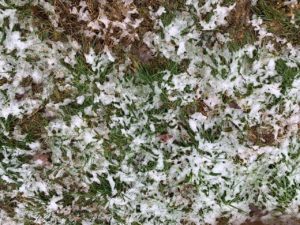
 first snow * the herb garden is sleeping
first snow * the herb garden is sleeping
January in the Garden
January is an excellent time to weed, cut back and prepare for spring. Get out there a pull whatever remains of last years annual garden and put it on your compost pile. Clip your perennials back to keep them from getting leggy and woody. This is also a great time to dig up and divide perennials, or move them if they need moving. The winter rains will induce oxalis to grow after its summer dormancy. Get out there and pluck it up before it makes flowers and bulks up its bulblets. The rainy days of January are also a great time to start sketching out the spring garden, perusing websites and catalogs for interesting varieties and taking stock of seed supplies. Cool weather crops such as lettuce, kale, collards, spinach, dill and peas can be started in flats or six pack indoors this month to be transplanted outdoors next month. Be sure to give them extra light 12-14hours a day, so they don’t get spindly Hardy brassicas such as cabbage, mustard, turnips and radishes can be started outside this time of year, though they will need protection from slugs and snails, who are active in the rain and delighted you are providing such tender morsels.
Focus on Fruit: What is a scion?
Fruit trees, like humans,produce unique offspring that do not resemble themselves exactly. So, to preserve varieties, fruit stock must be cloned and the technique for doing this is called grafting. Grafting is the process of joining the desired variety to a rootstock. The piece of wood that will become the desired variety is called the “scion.” If you look at most fruit trees you will see the grafting site towards the base of the tree— usually signified by a change in the bark. Scionwood is new wood from the last growing season. It is usually green and still flexible. Rootstocks are compatible varieties that more than usually do not make good fruit, but are selected for their vigor, adaptation to particular soil types or capacity to control the size of the resulting tree. If you love fruit you may want to consider attending the local scion exchange coming up this month and/or coming to my urban orchard intensive at the end of February. I do love the scion exchange. For a mere $5 entry fee you can grab all the fruit varieties you like and take some workshops too.

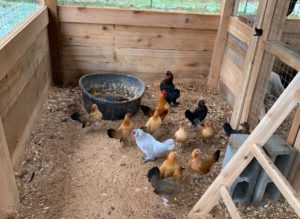
finished chicken house * happy bantams
News From the North
I think I am at my limit for ordering new types of dahlias, rose bushes and seeds. I have some 30+ new varieties of dahlia tubers coming (it’s an addiction, really), six new rose bushes, and several dozen packs of seeds. I grew too much food last year and am honing in on what grows well here and what crops are useful for eating and crafting my added value goodes. Plus I chose a few unusual things from the Baker Creek Seed Catalog, like pink celery and celtuce—a thick stalked lettuce which can be chopped for salad or stir fry. In addition, I have purchased 4 types of cotton seed and a dozen packs of seed for my dye garden—this will keep me from growing too much food! I literally harvested over 200 cucumbers last year and most of them went to livestock. I am preparing to dig holes for a final planting of fruit trees—finishing out the cider orchard and a few gaps left in our main orchard. It is turning out to be a nice collection. We are identifying areas for development in the high use area of our property and continuing to work on our pasture plan and plan for handling areas for our sheep. The chickens and pigeons are happily settling in to the new coop, which still needs some finishing touches.
Follow Up on November Discussion Query
In November I posted a query to this group to ask your ideas of what is going on with homesteading in the Bay Area. Many people wrote back with their thoughts, many to say they are still committed to growing and gardening who shared stories of their progress and hopes. Others cited reasons for a shift in interest/availability to pursue urban ag and heirloom skills:
Economics ~ hard rental market, small spaces, no yard, gentrification and cost of living, growing our own food becoming a privilege activity, because off cost of living
More resources available ~ Nextdoor has a hobby section, YouTube, instructables, vast online educational resources
Movement in a slump ~ General decline in interest, people not buying organic or local, less interest in barter, it’s just too much work, those who are dedicated don’t need the education anymore
Demographics ~ tech boom is causing hippie, activist, gardener types to move from the area, general movement out of the area, movement towards more rural by folks interested in growing & gardening.
Politics ~ People who started homesteading in answer to political cliamte now feel need to focus on more direct forms of social/political change
Classes for Spring 2019
Keeping things simple this Spring with a few of our best-selling standards. A few additional classes may be added by next month, we’ll see. If there is something you are dying to learn, please let me know and I will do my best. We are looking at tentative dates late September for a reprise of our much loved Urban Farm Tours.
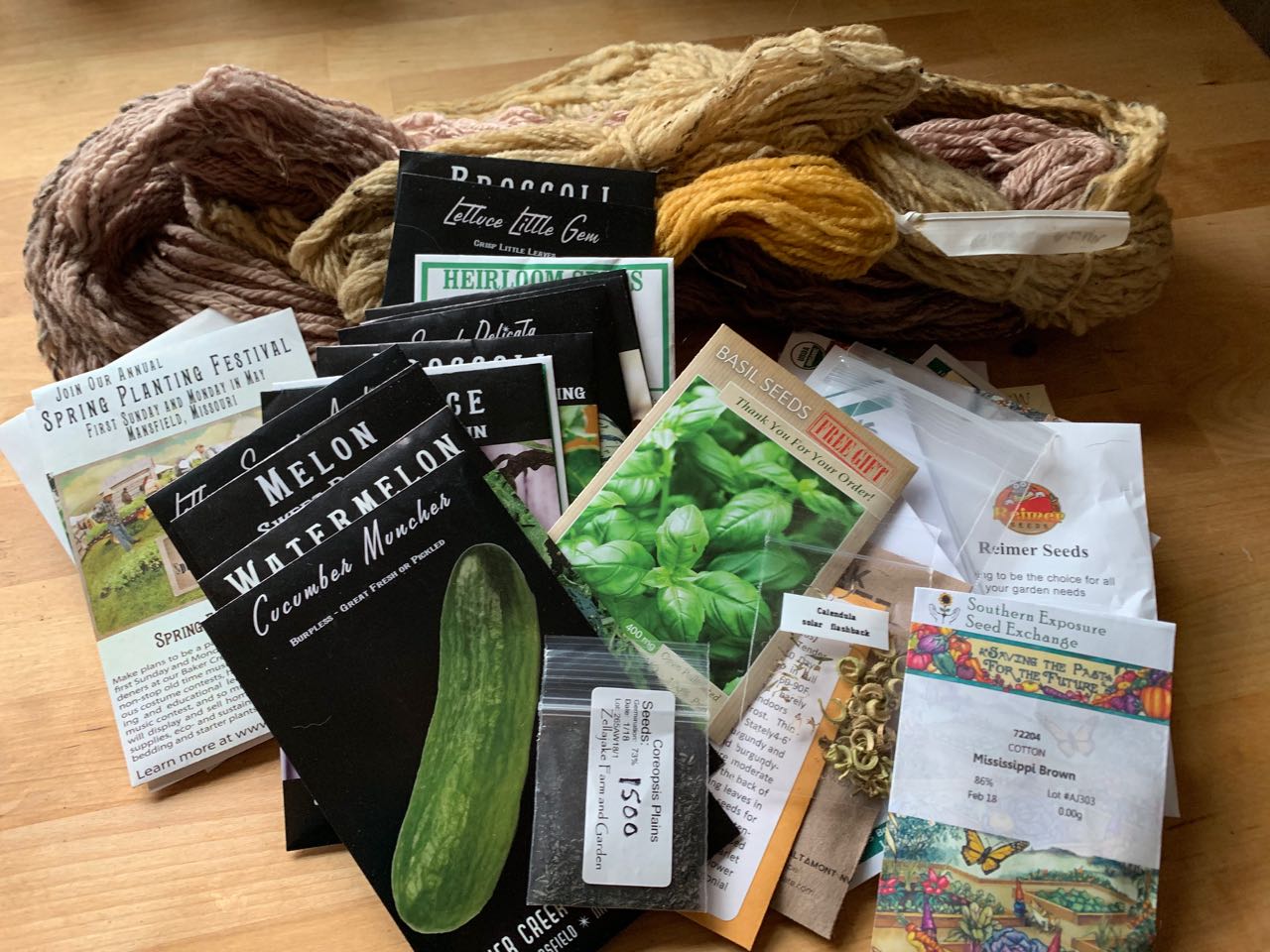
![]()
